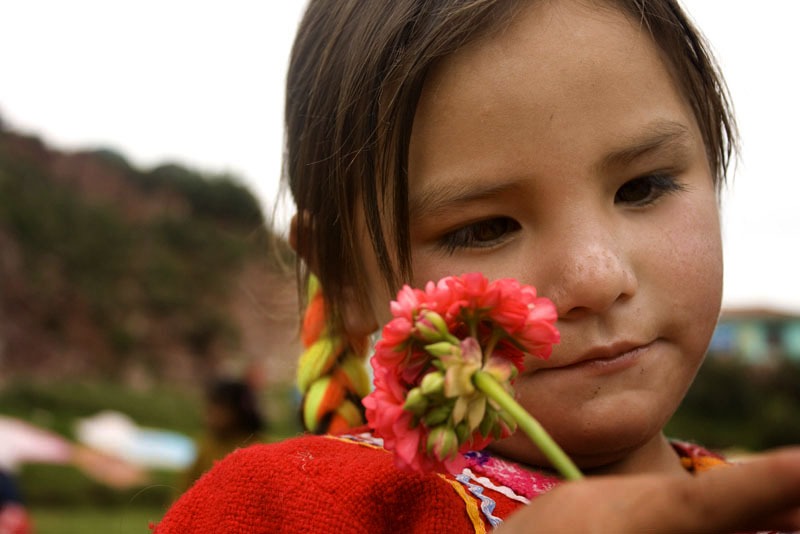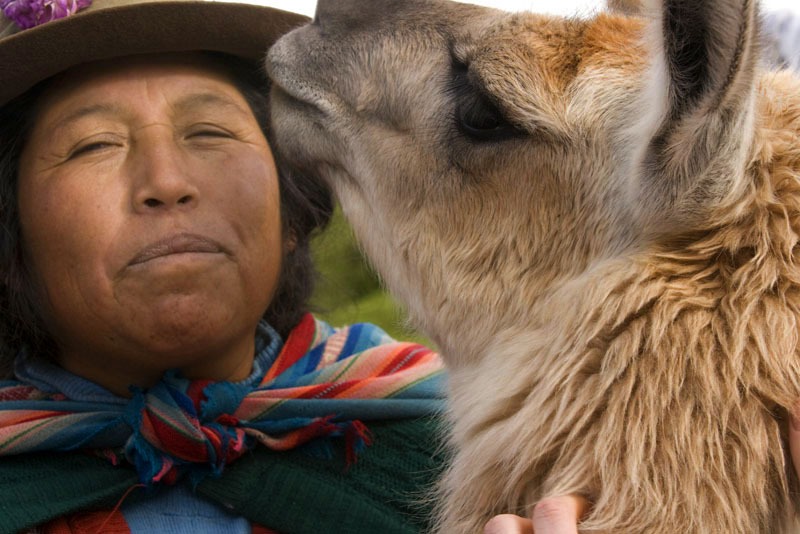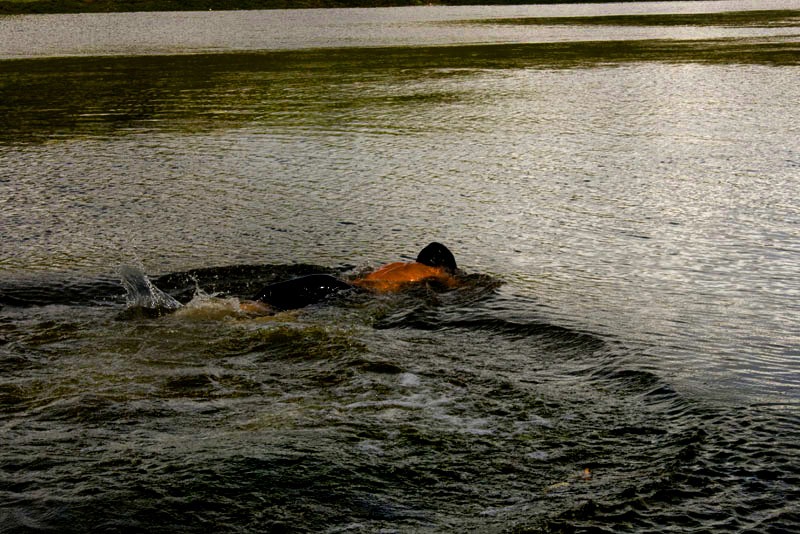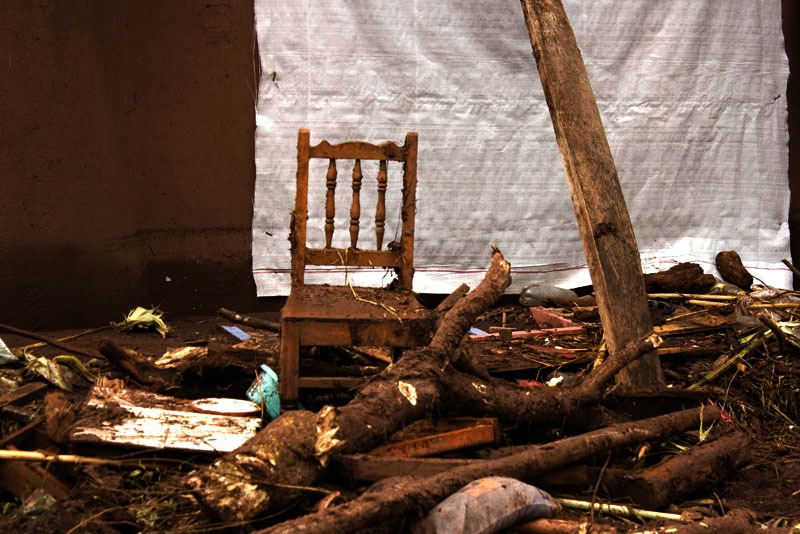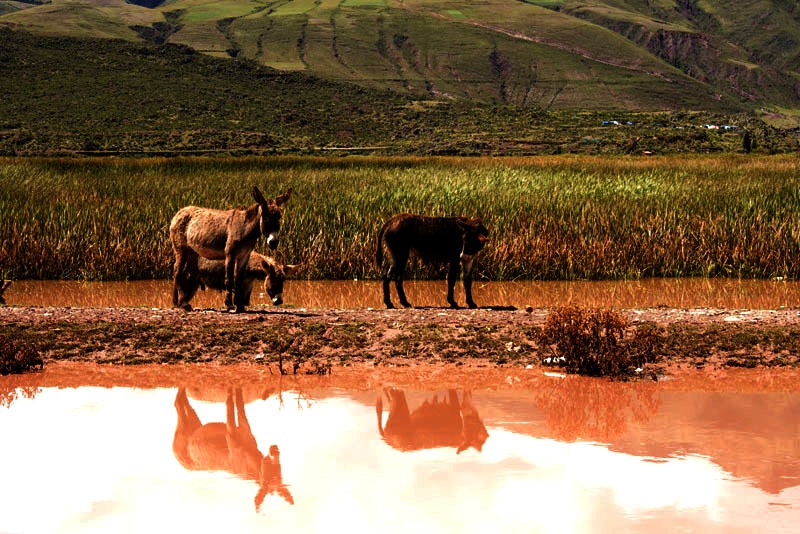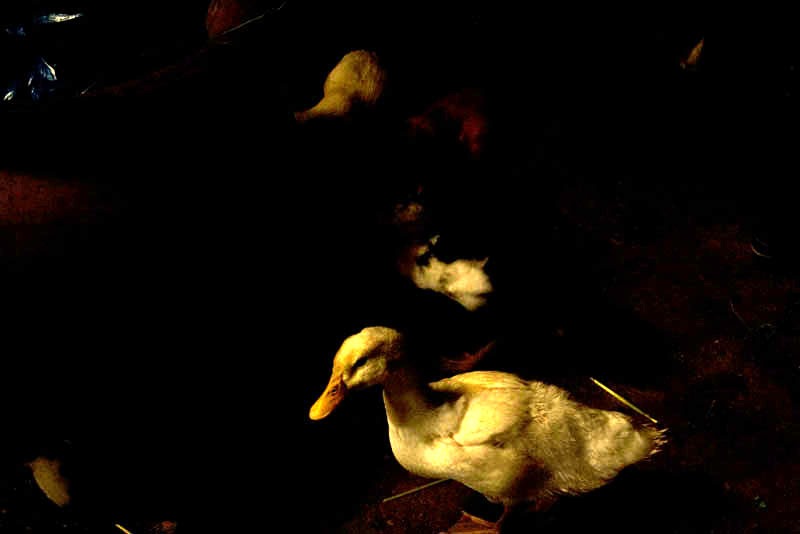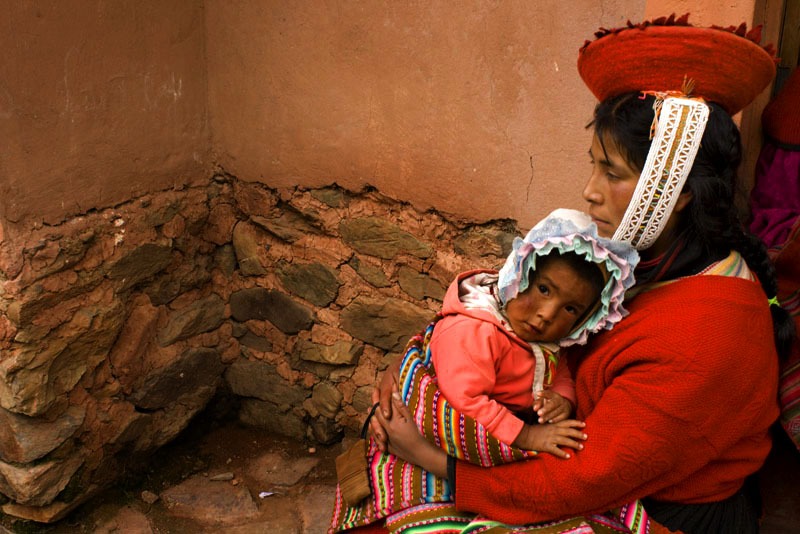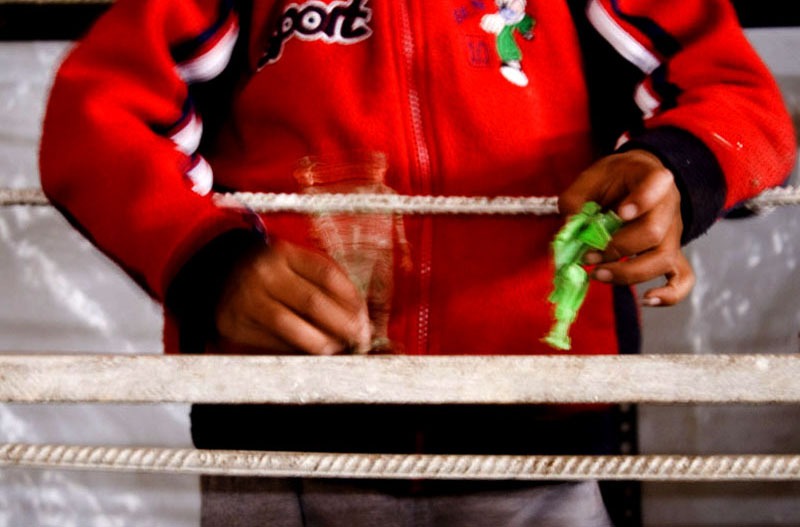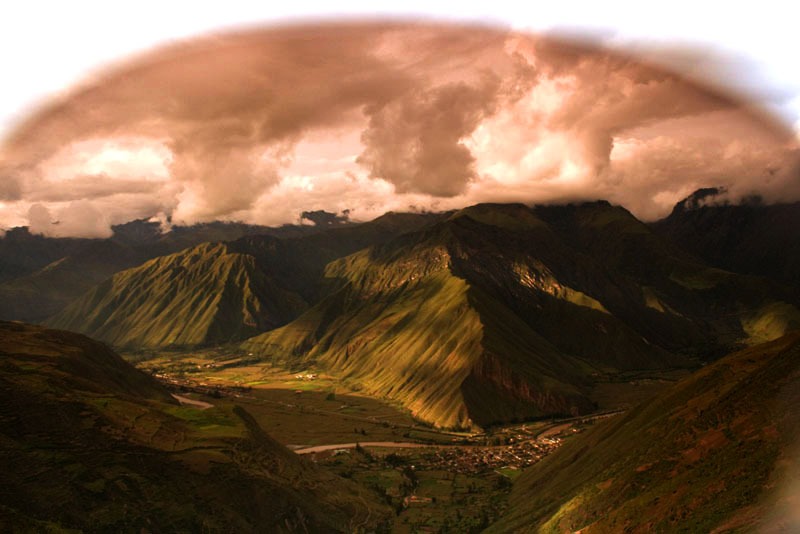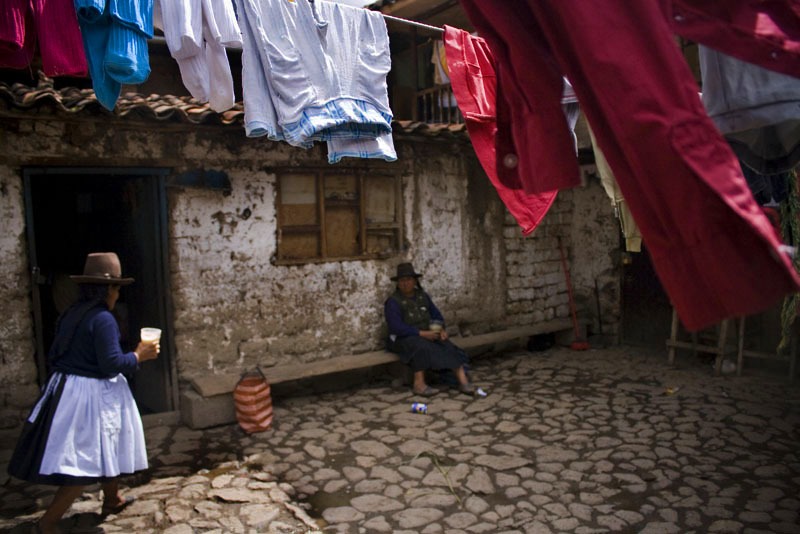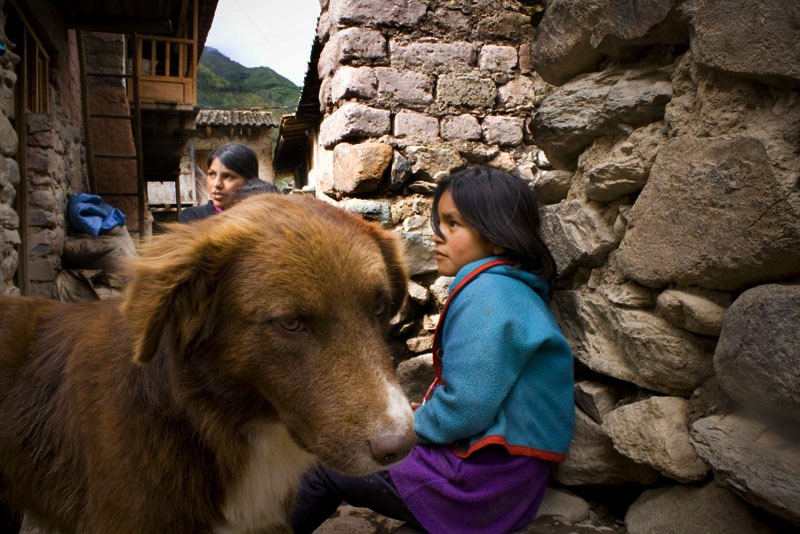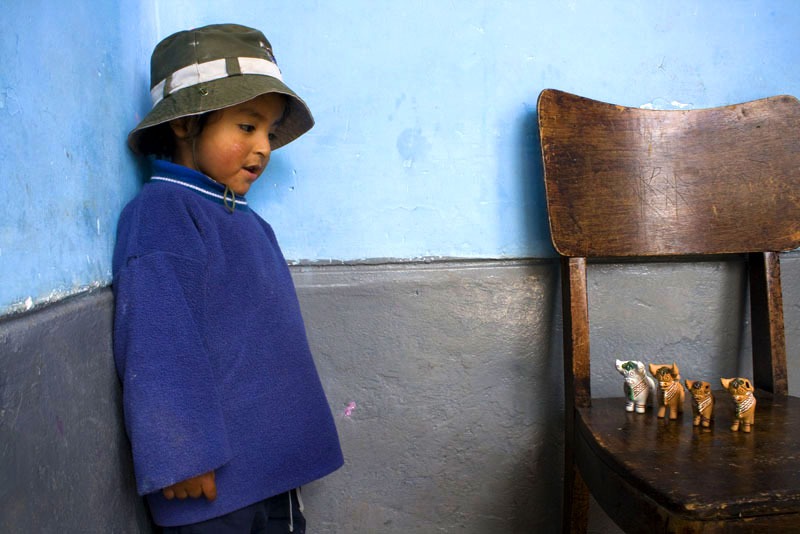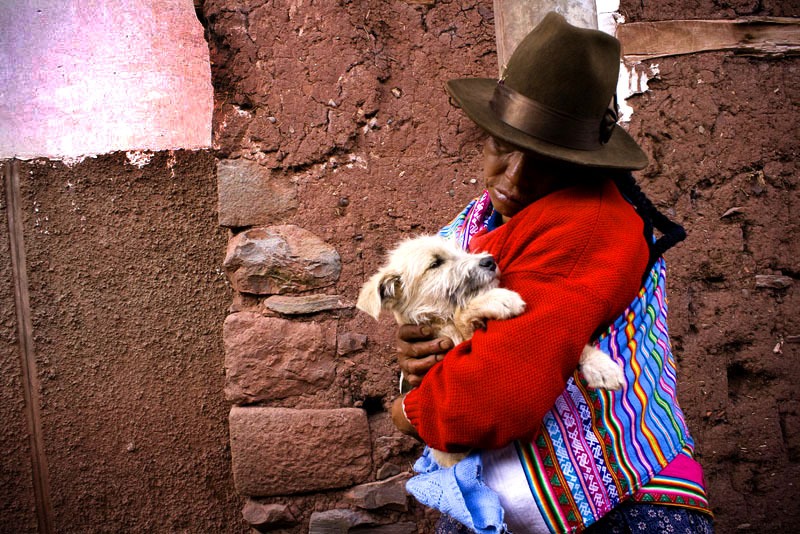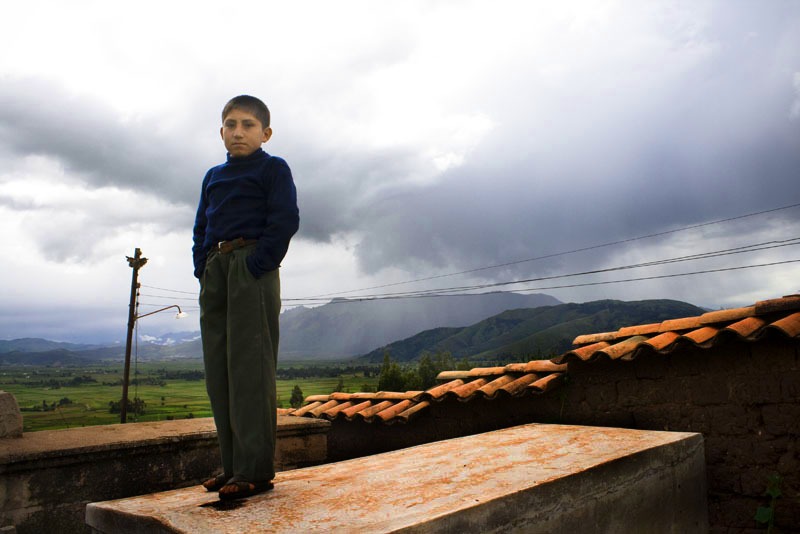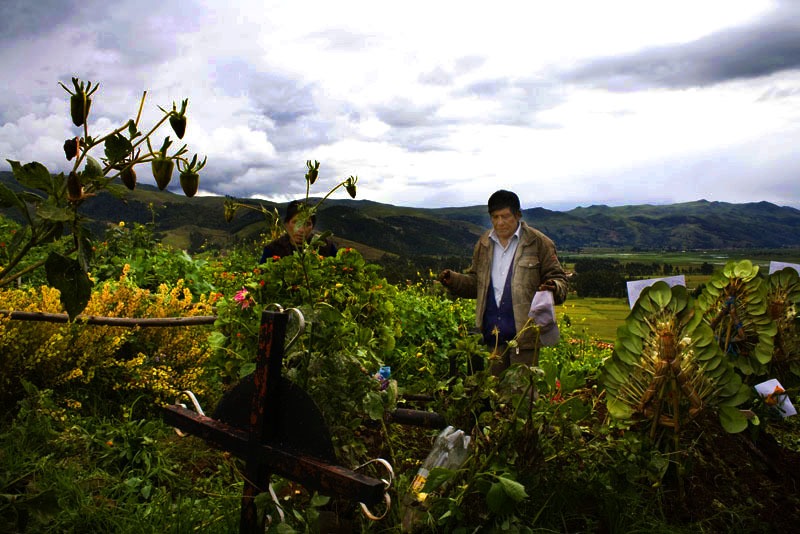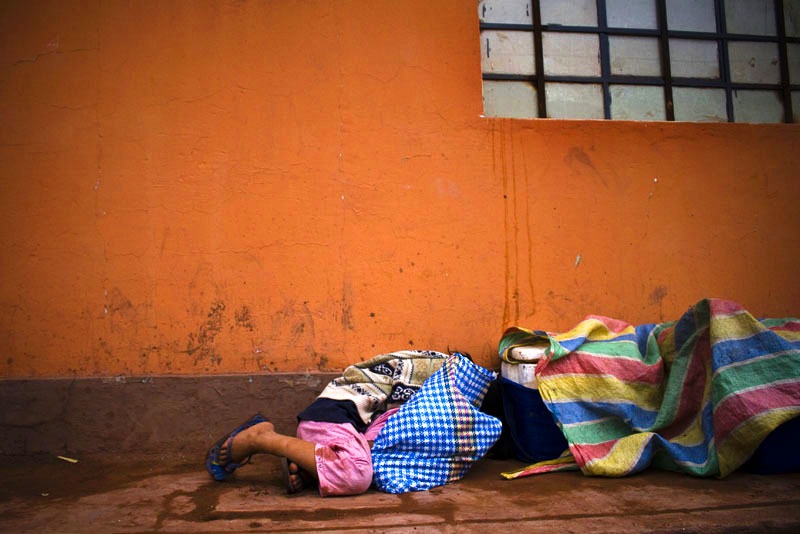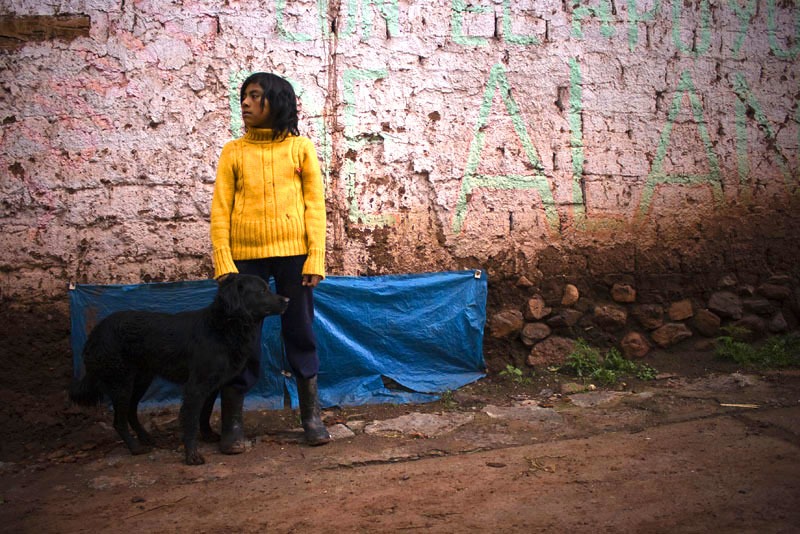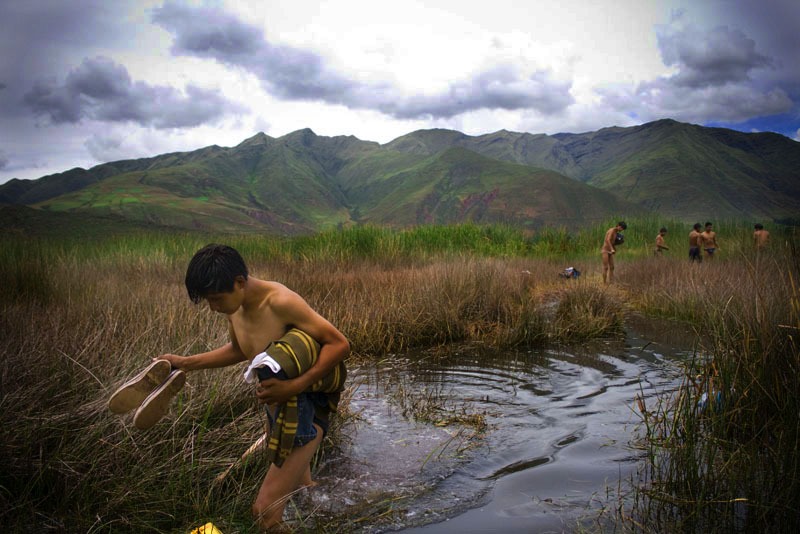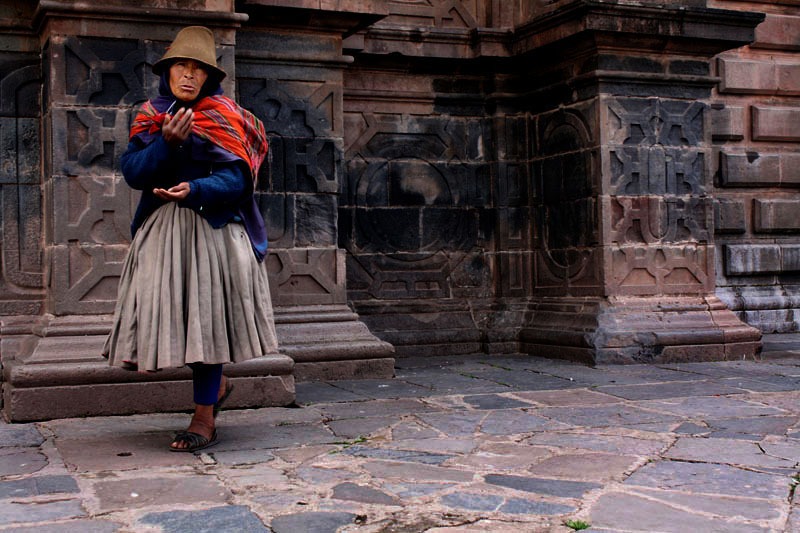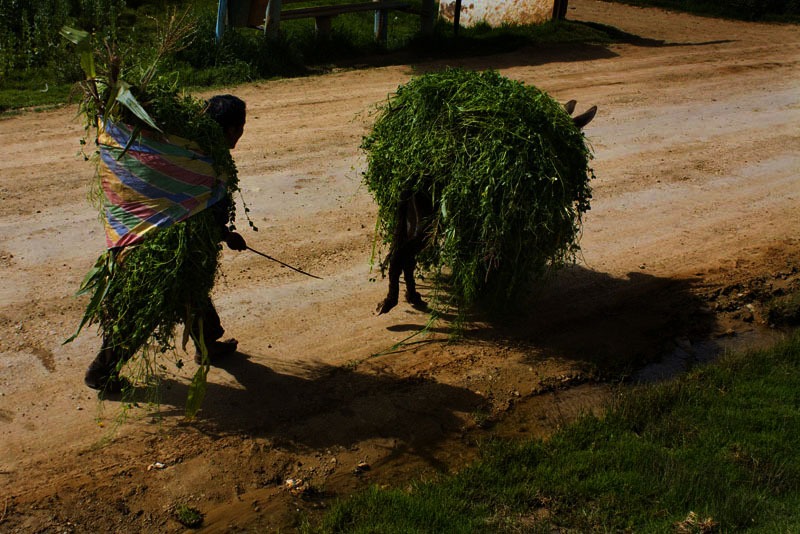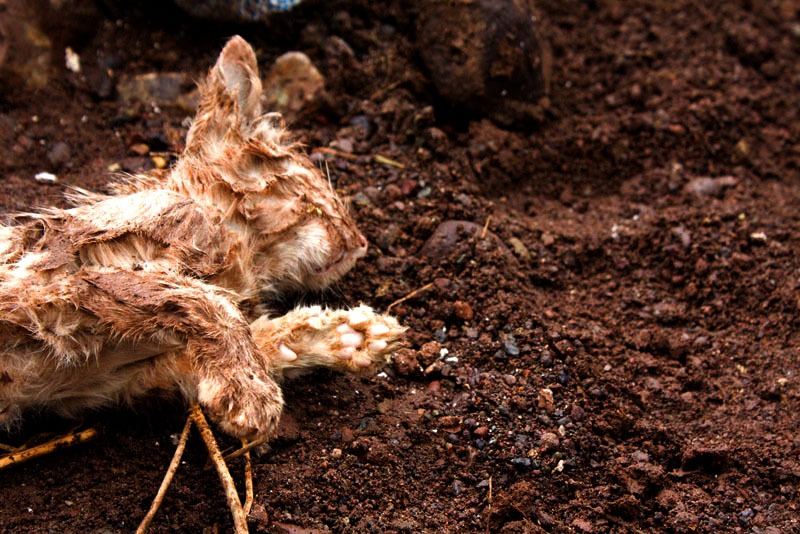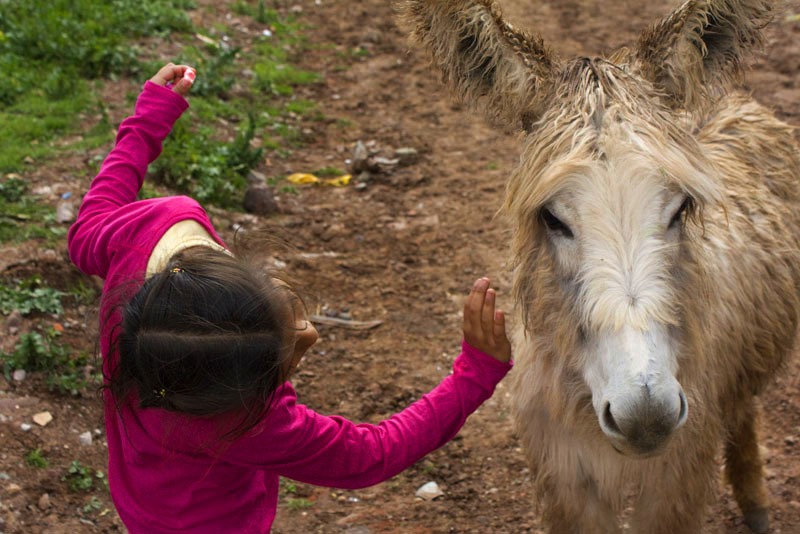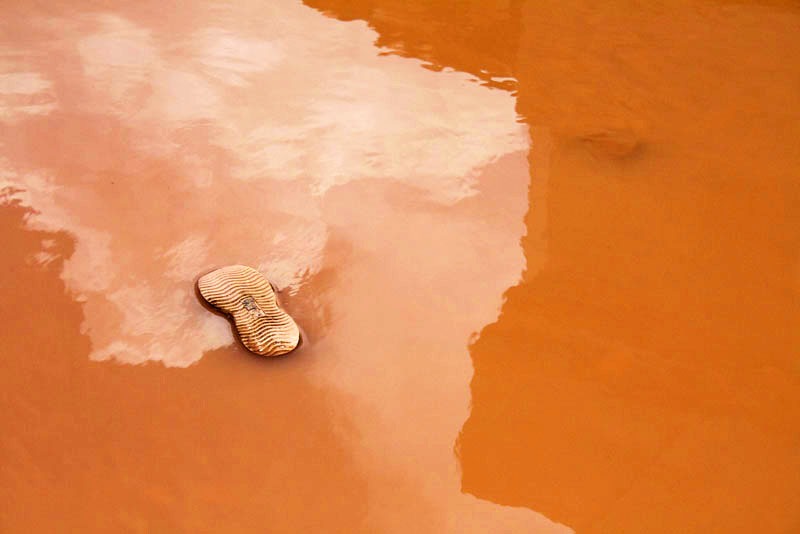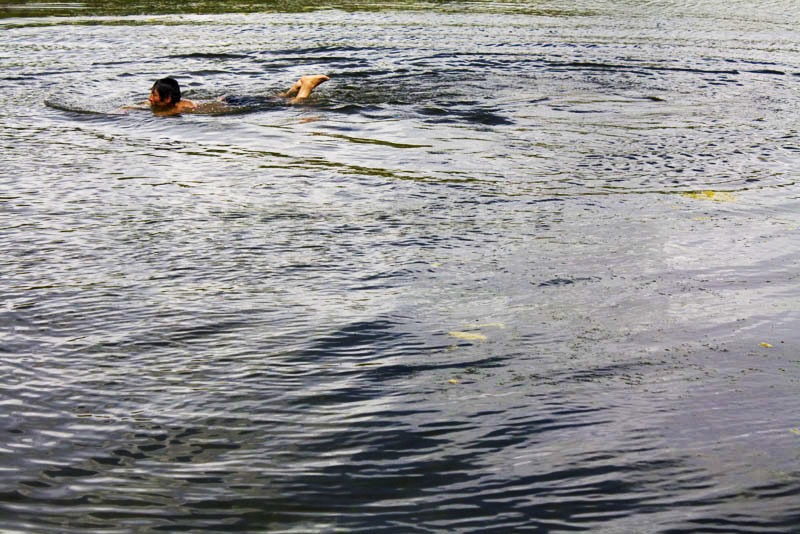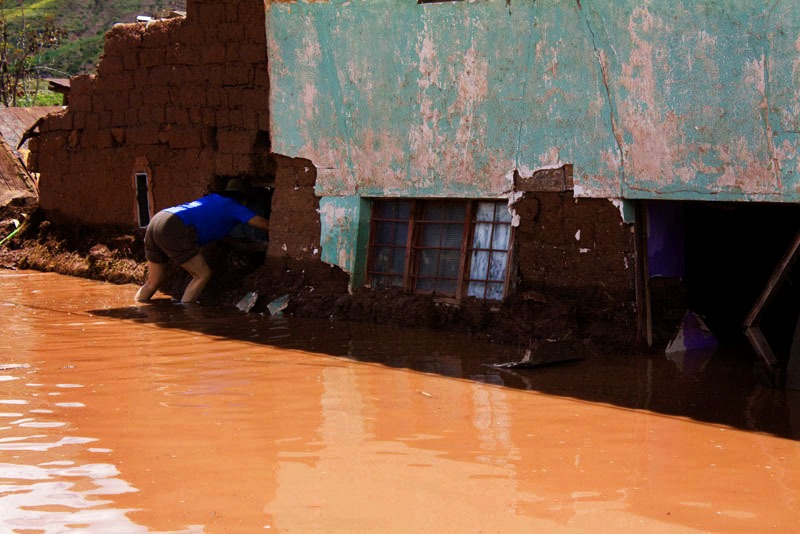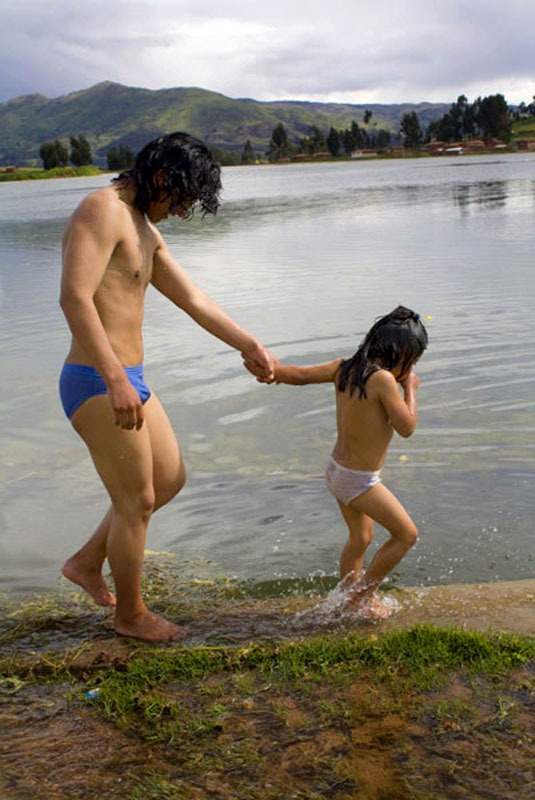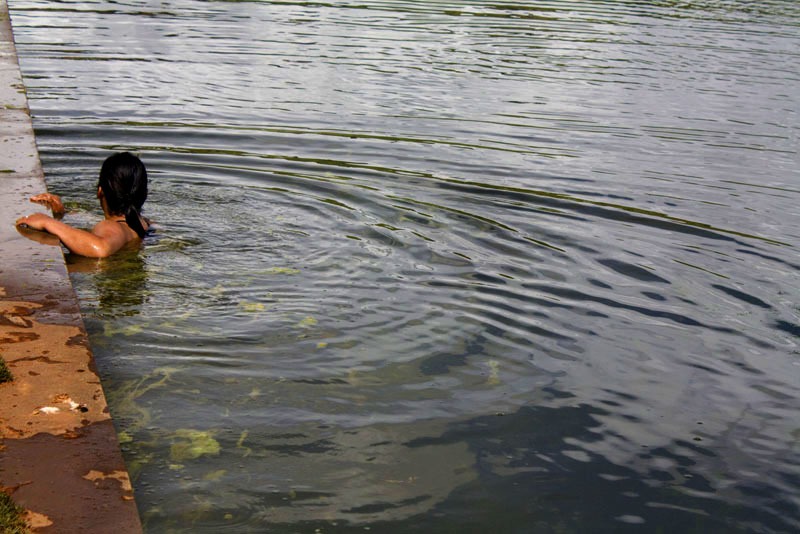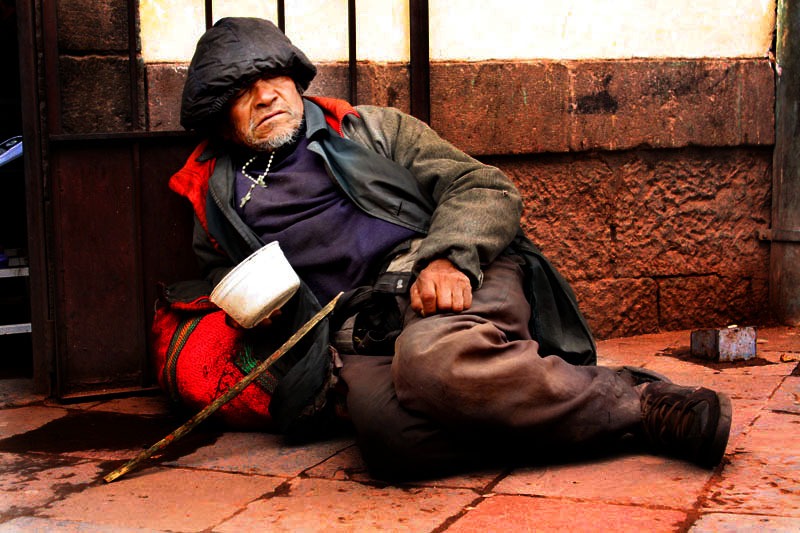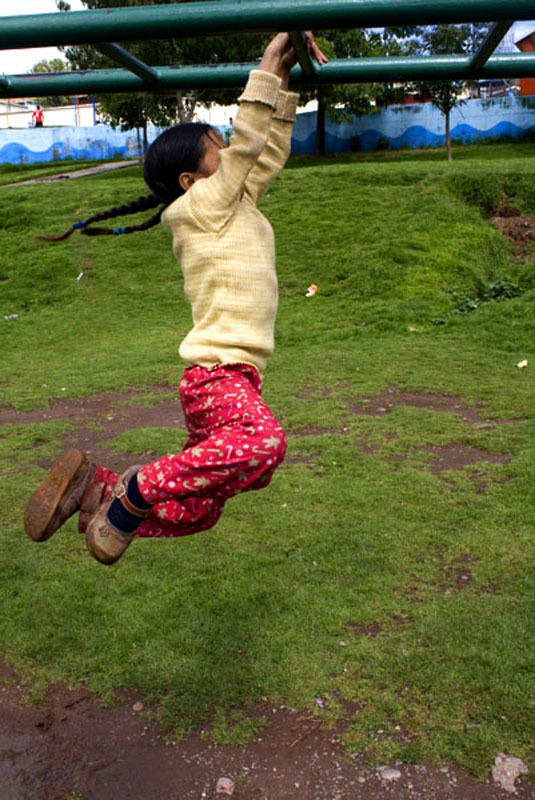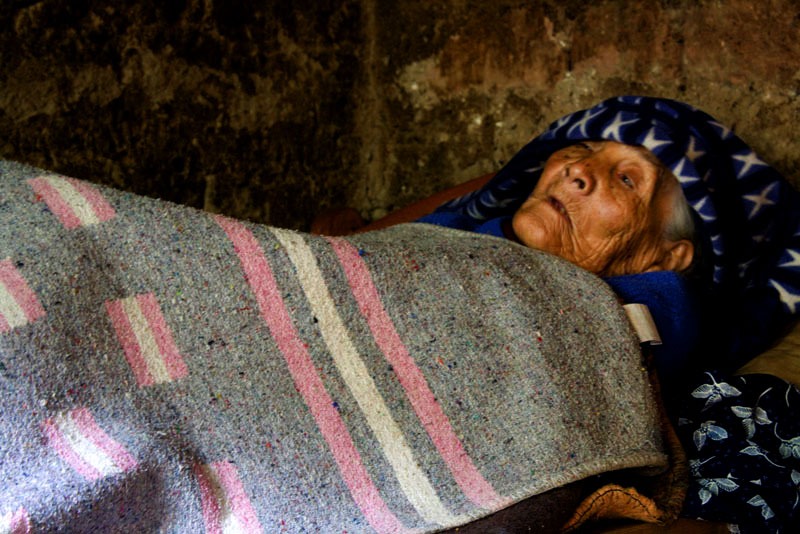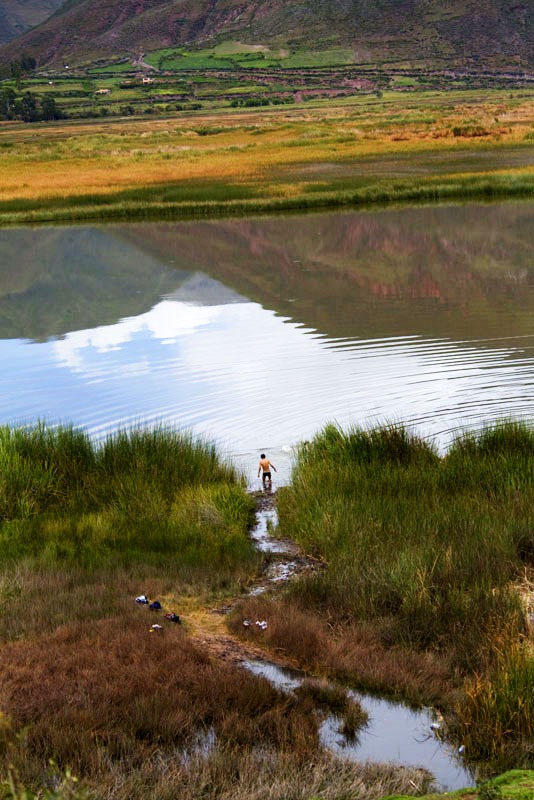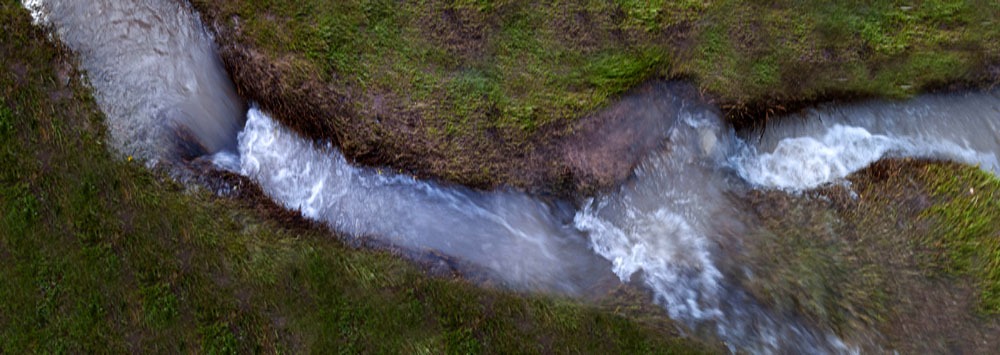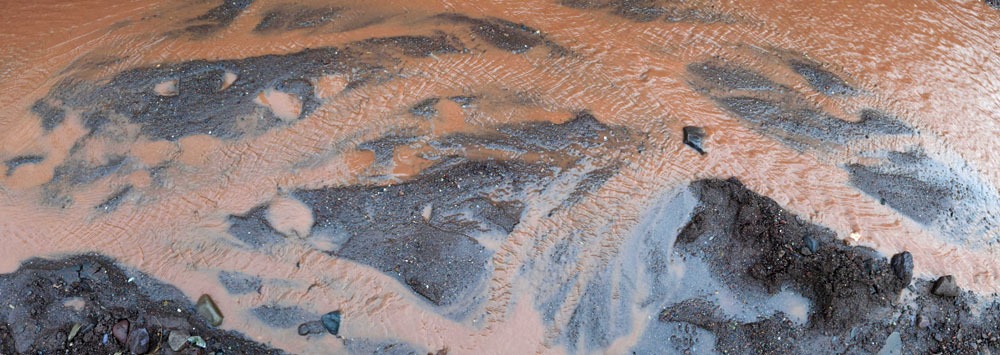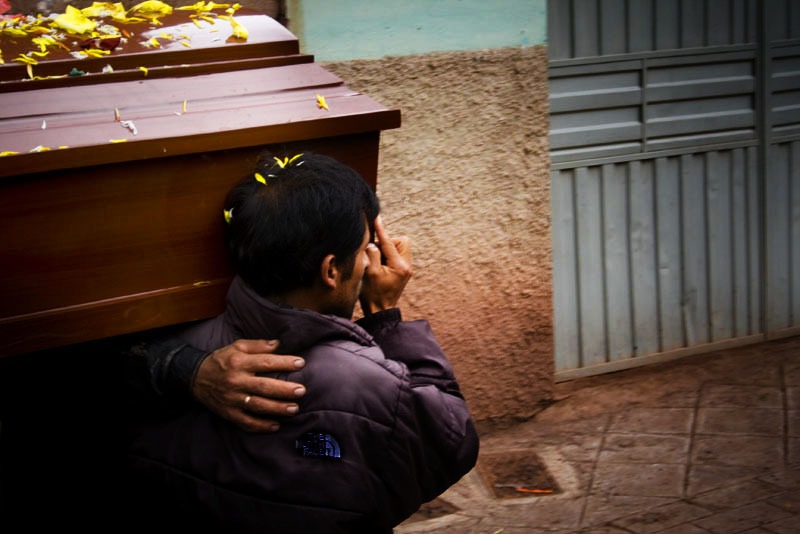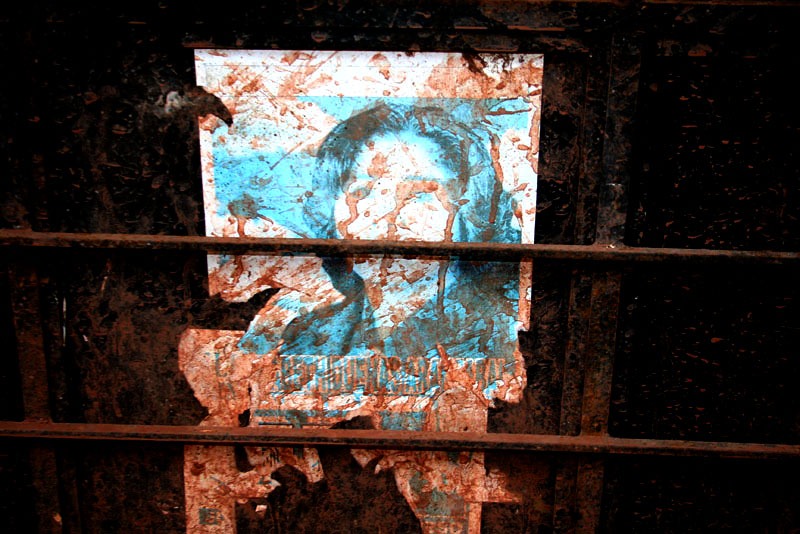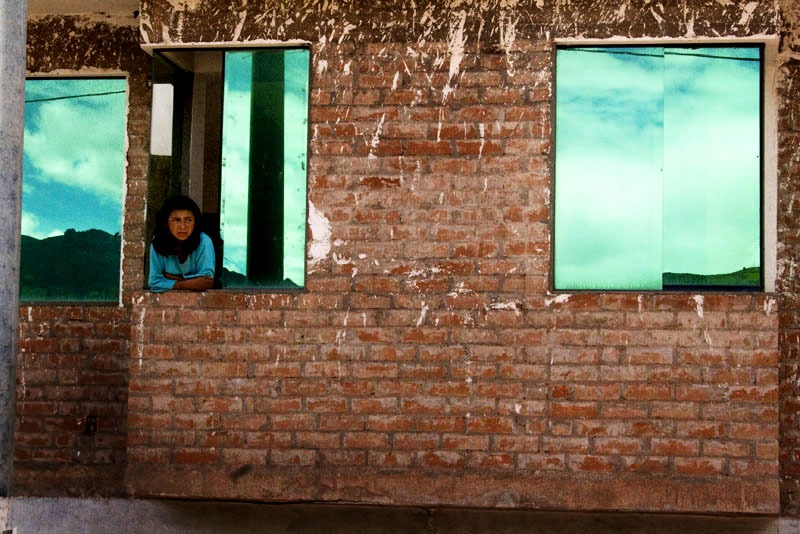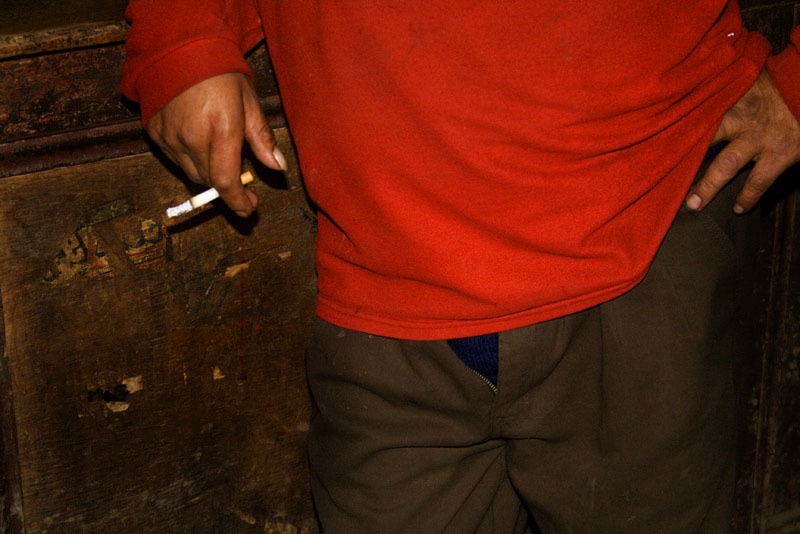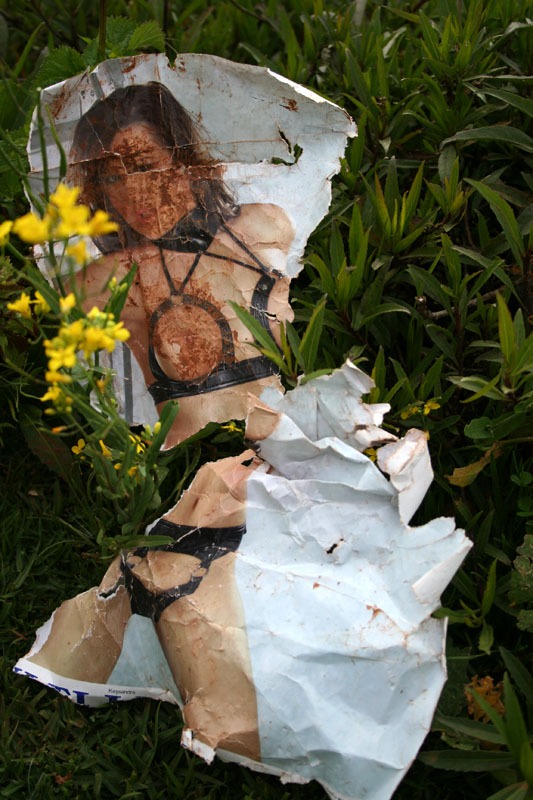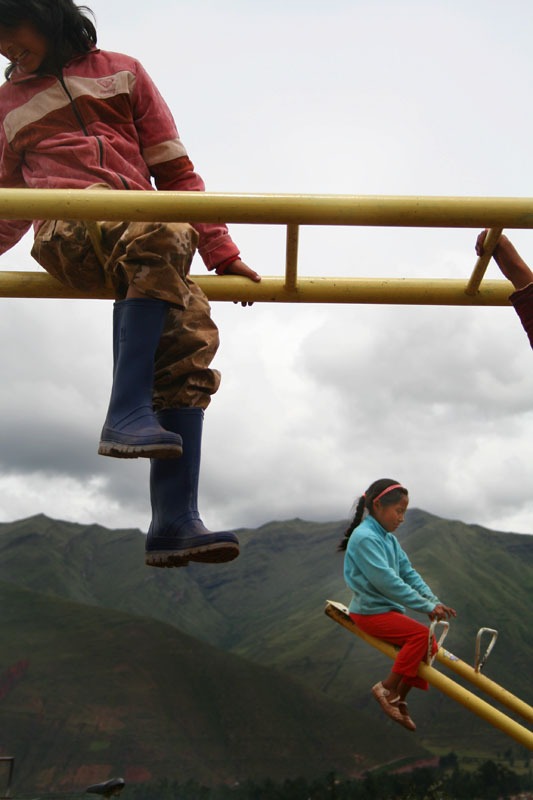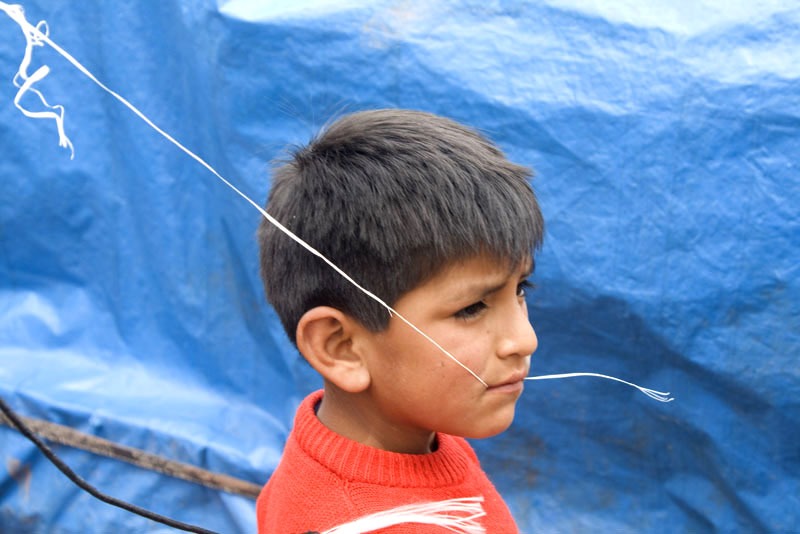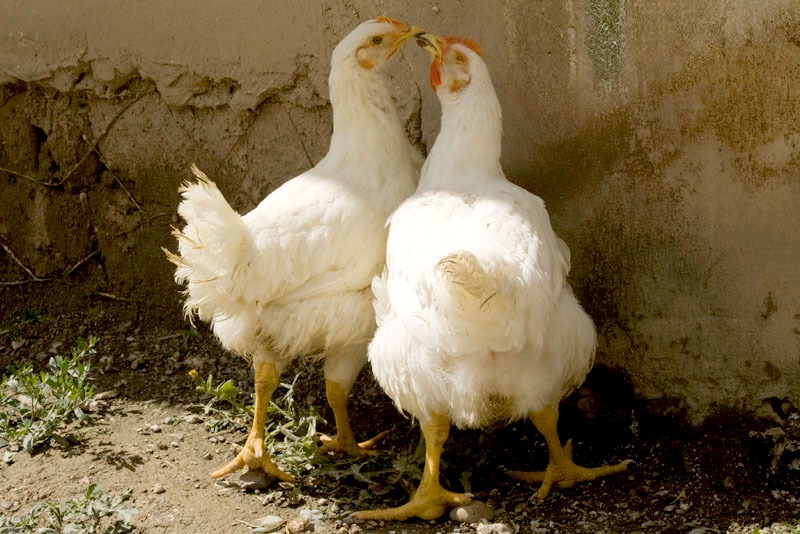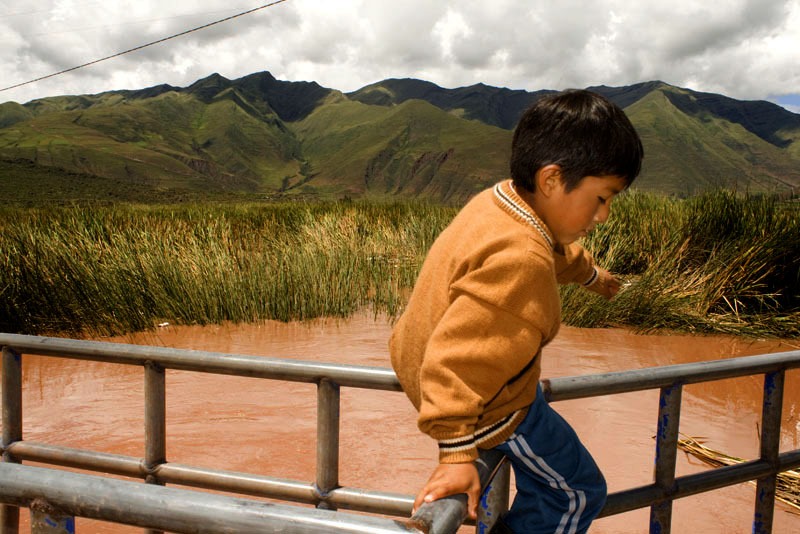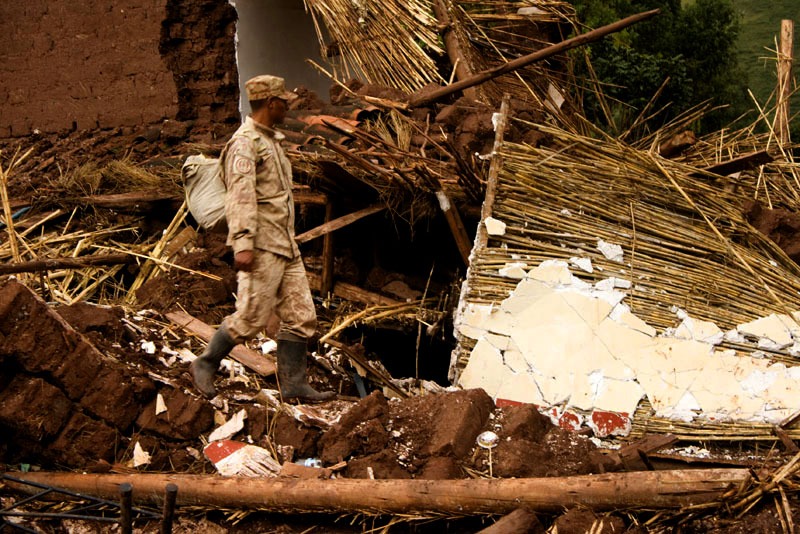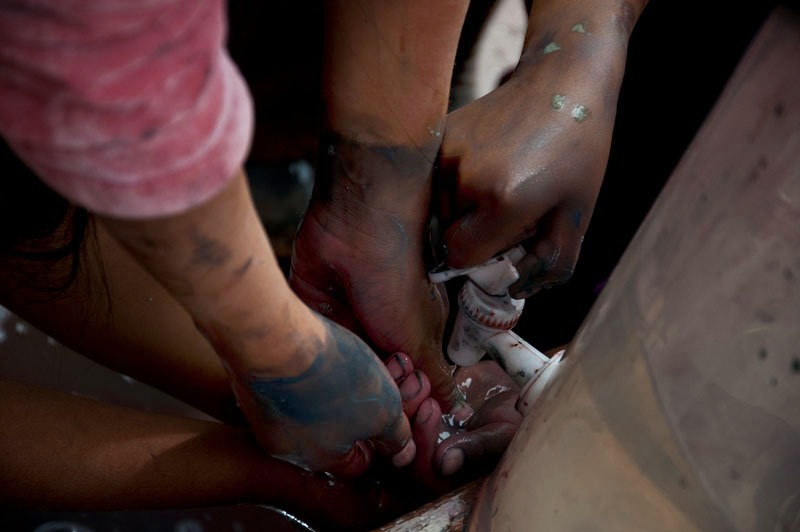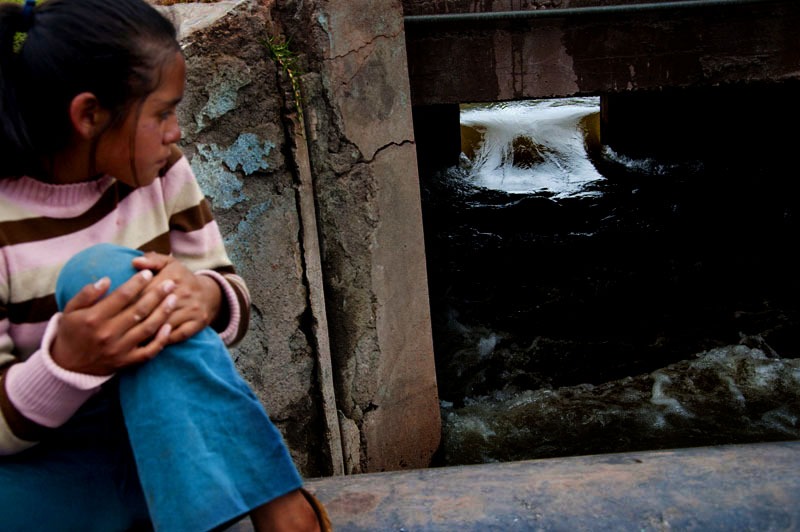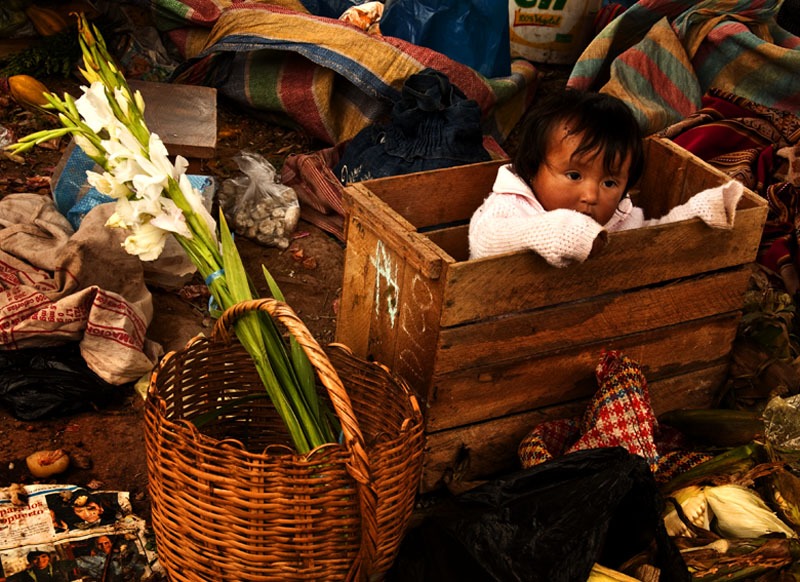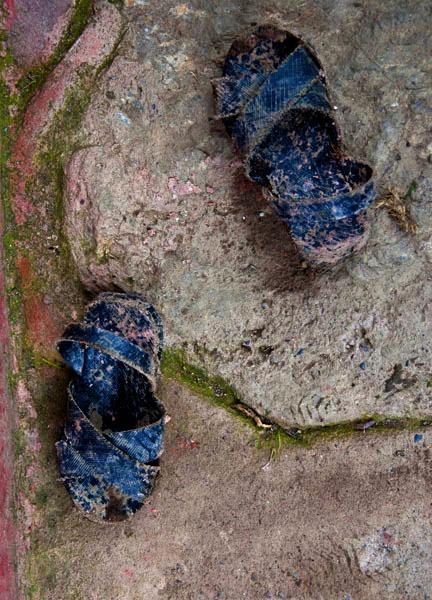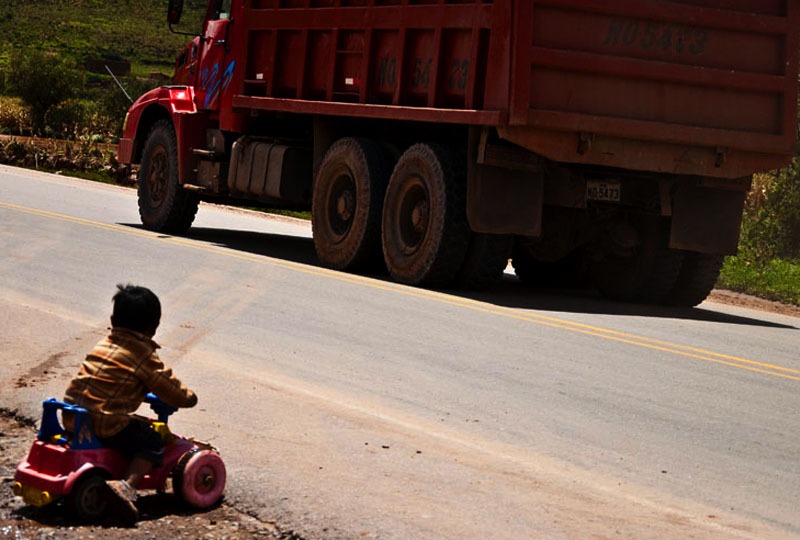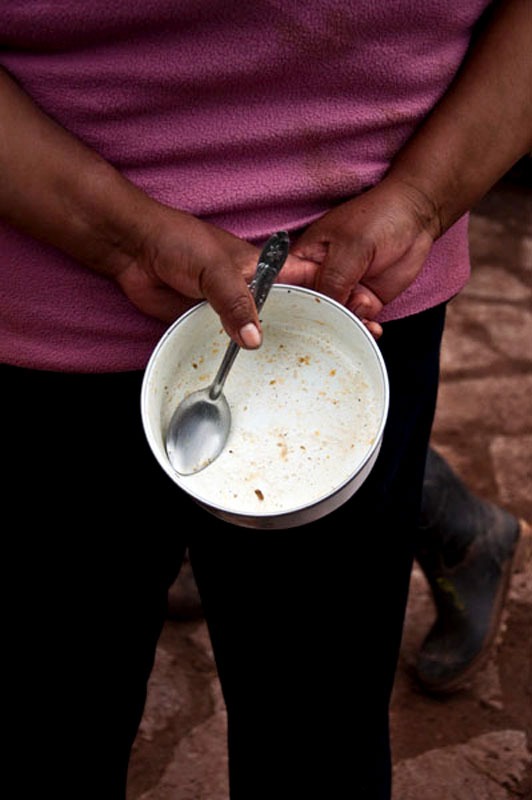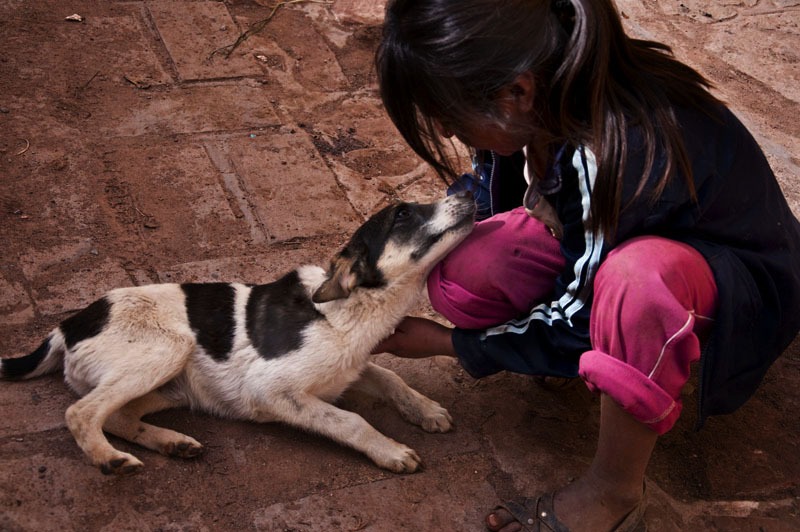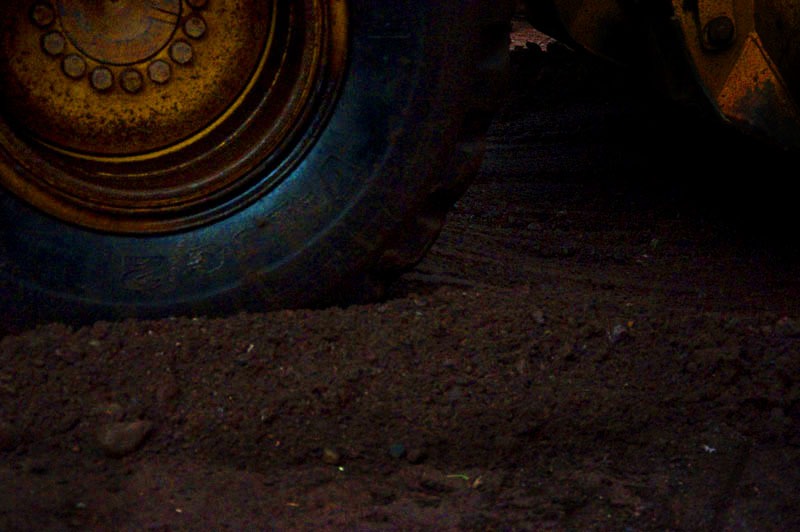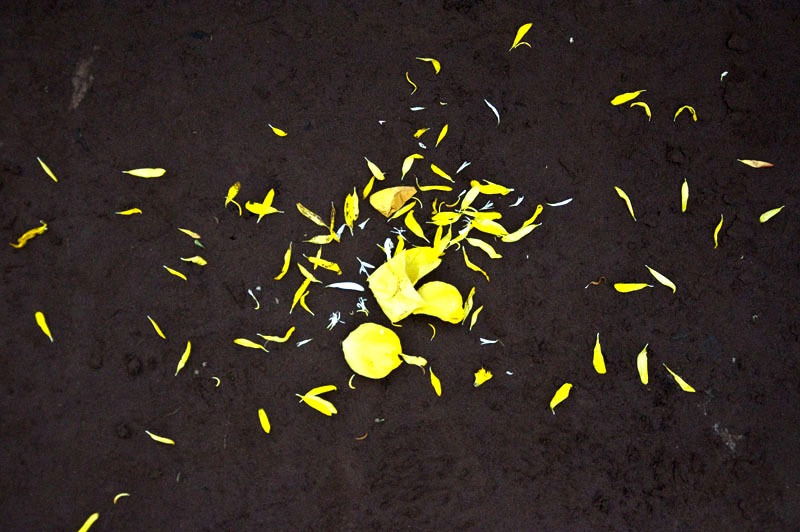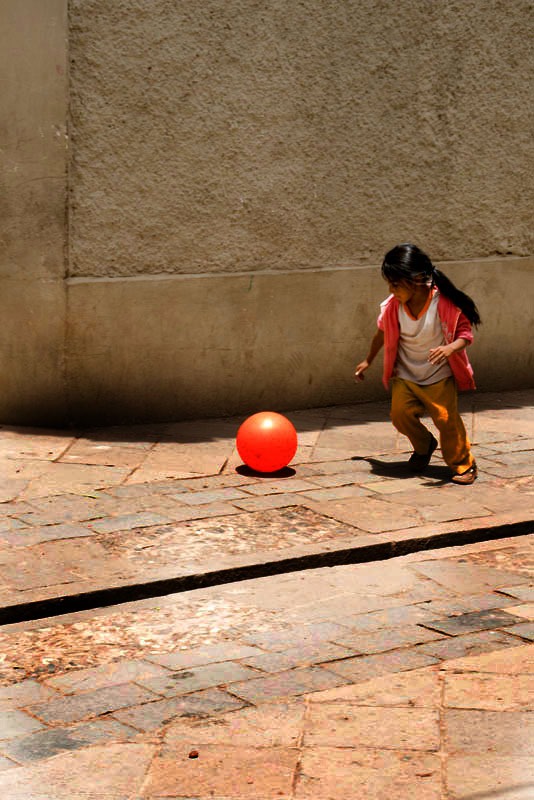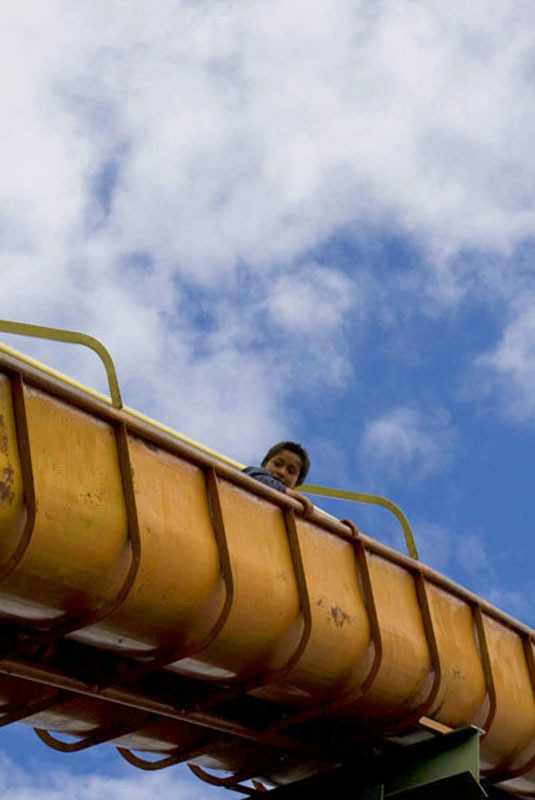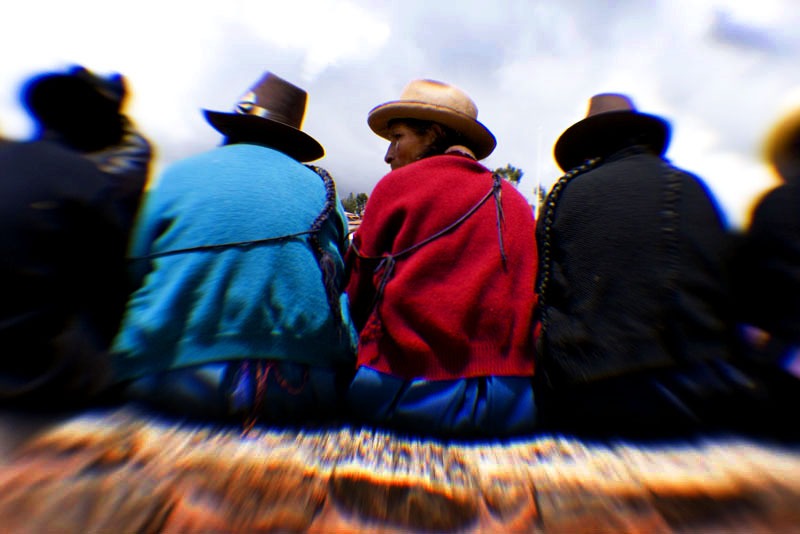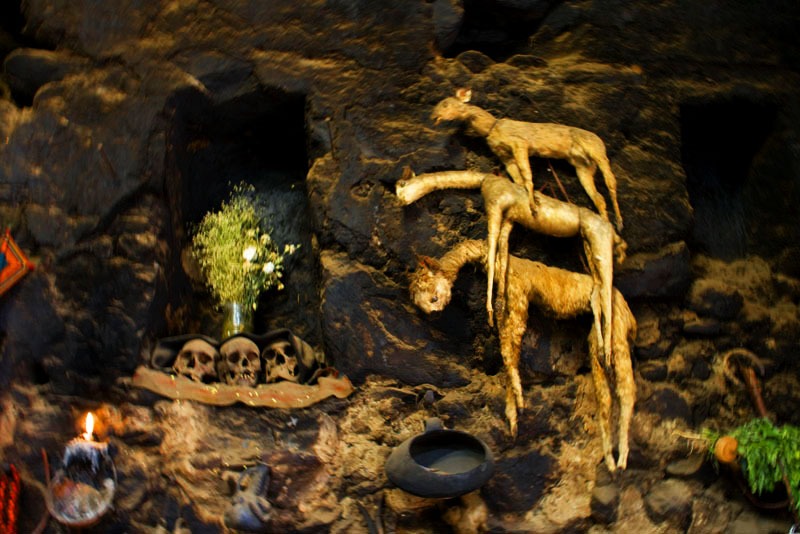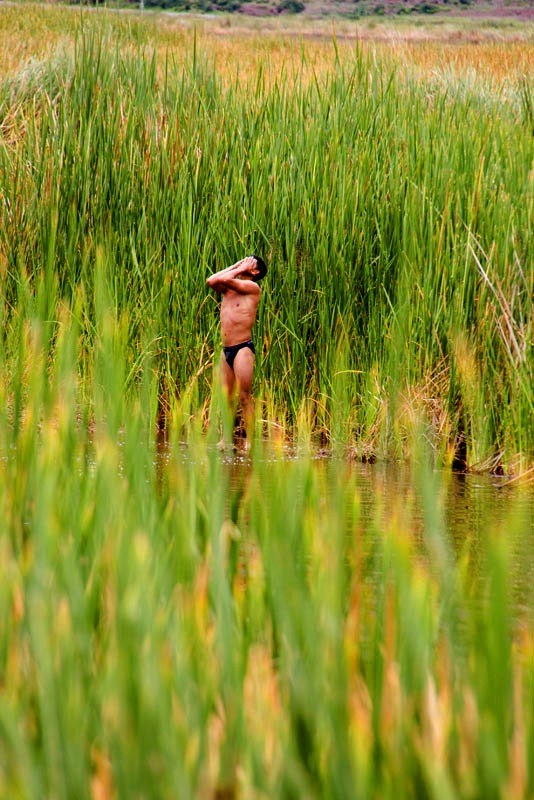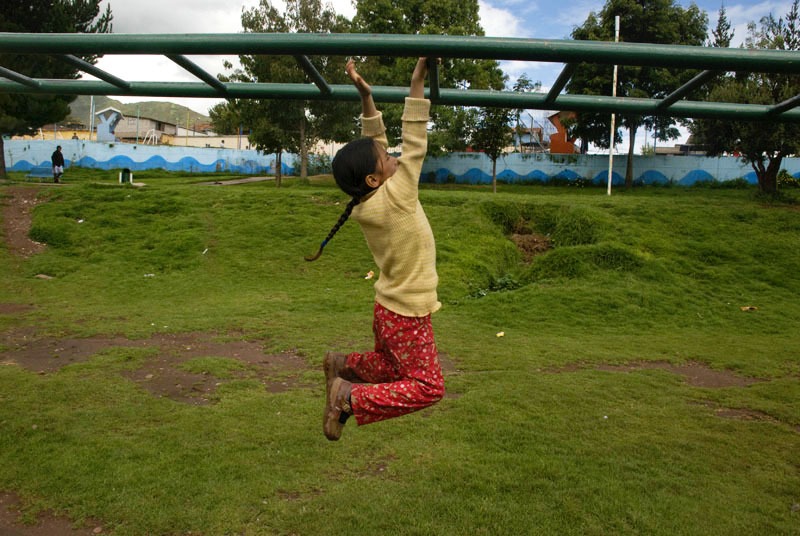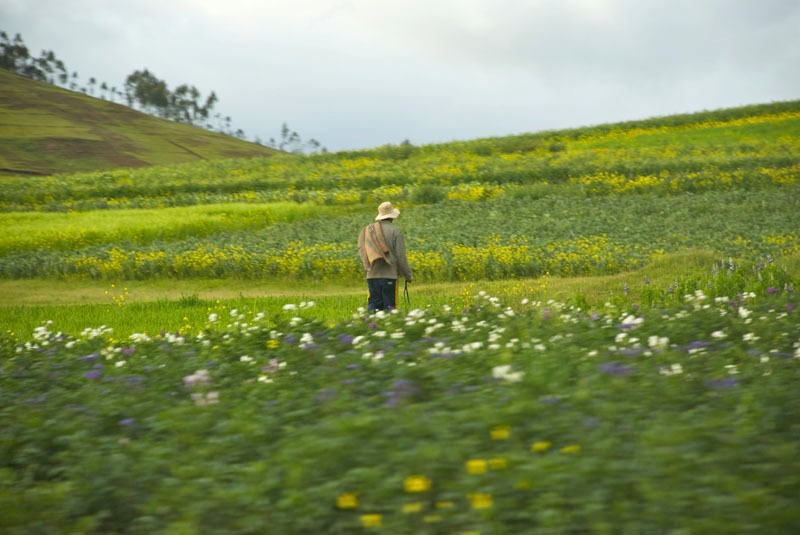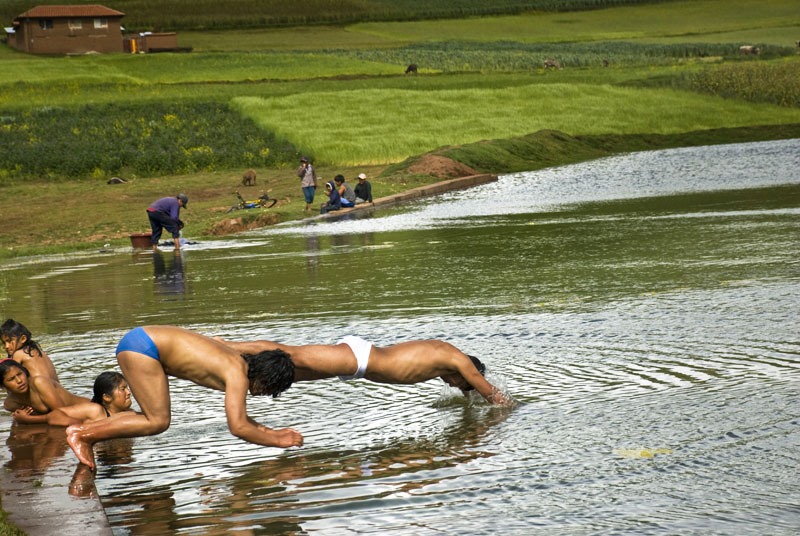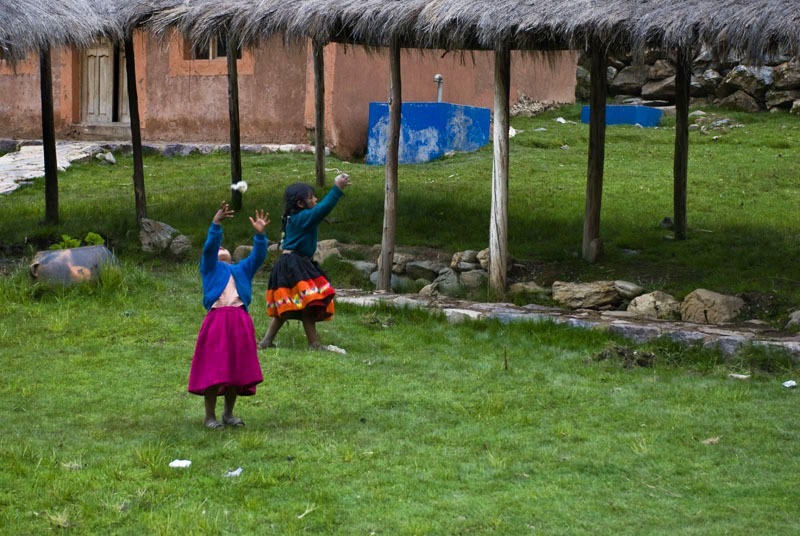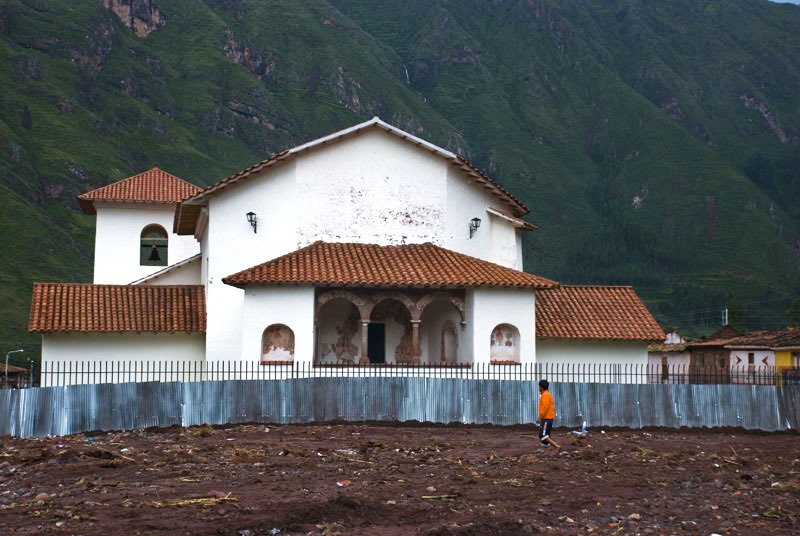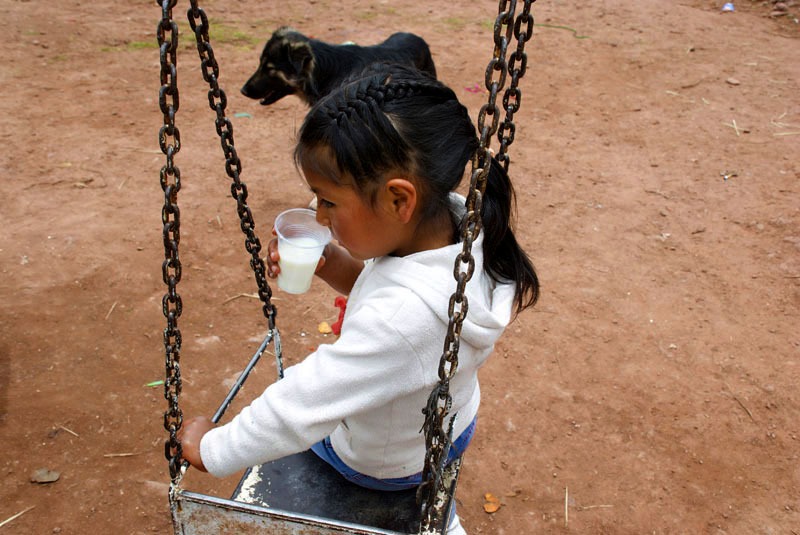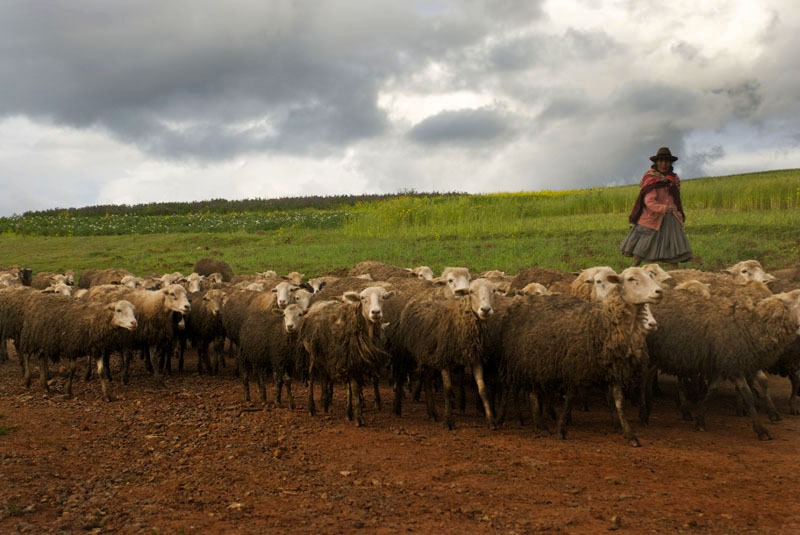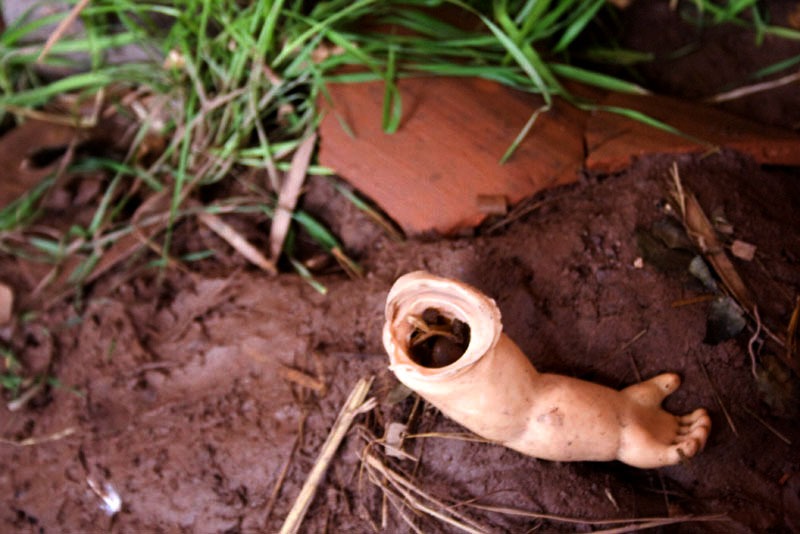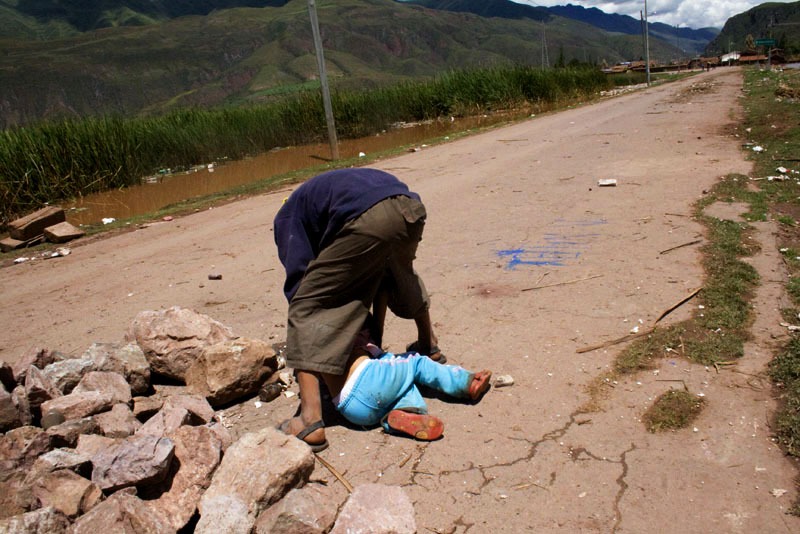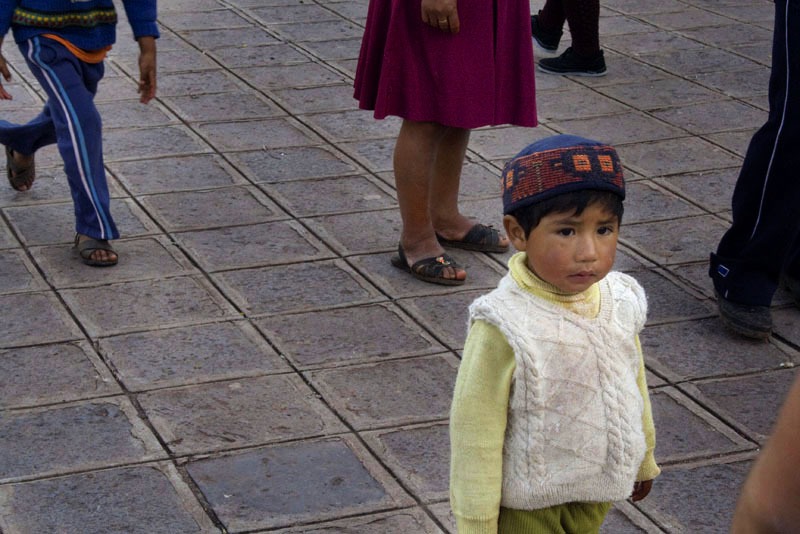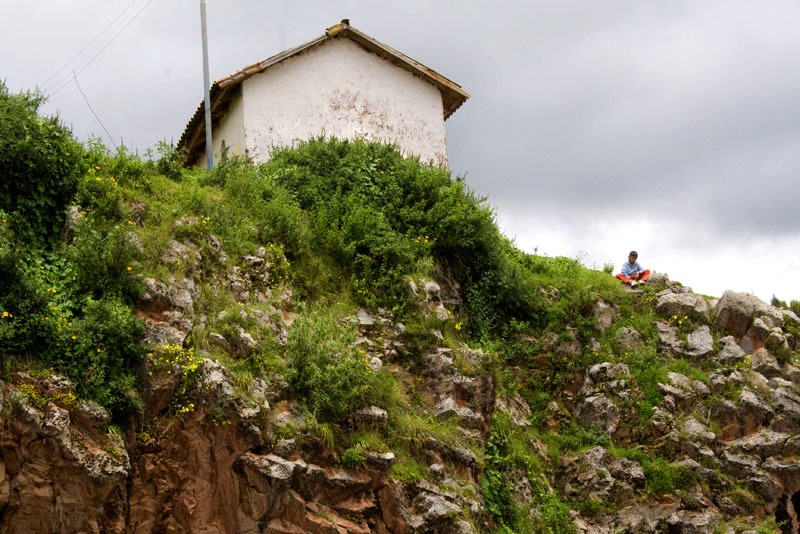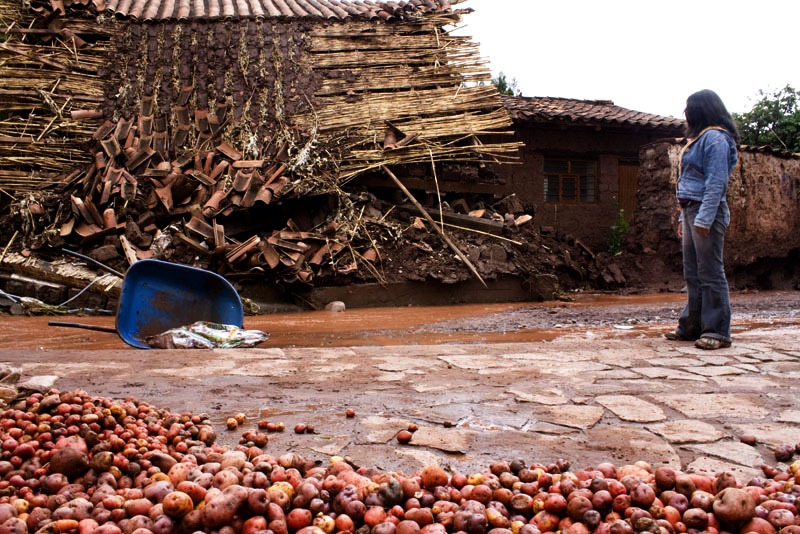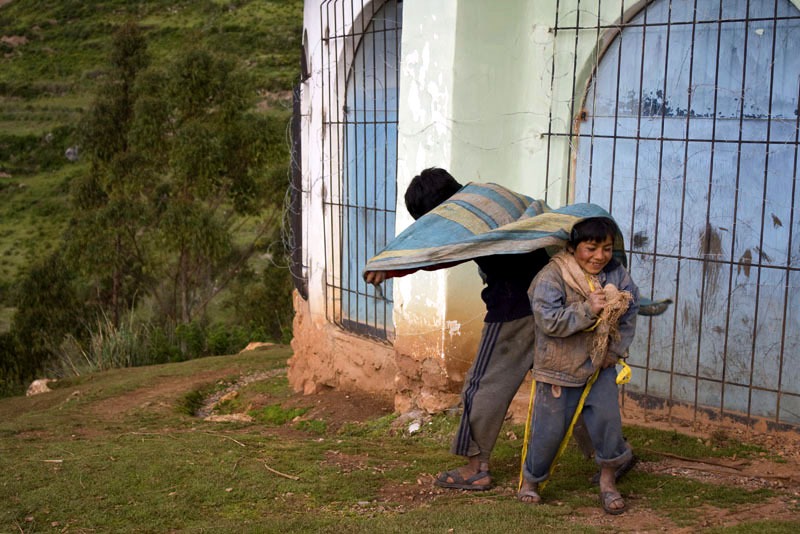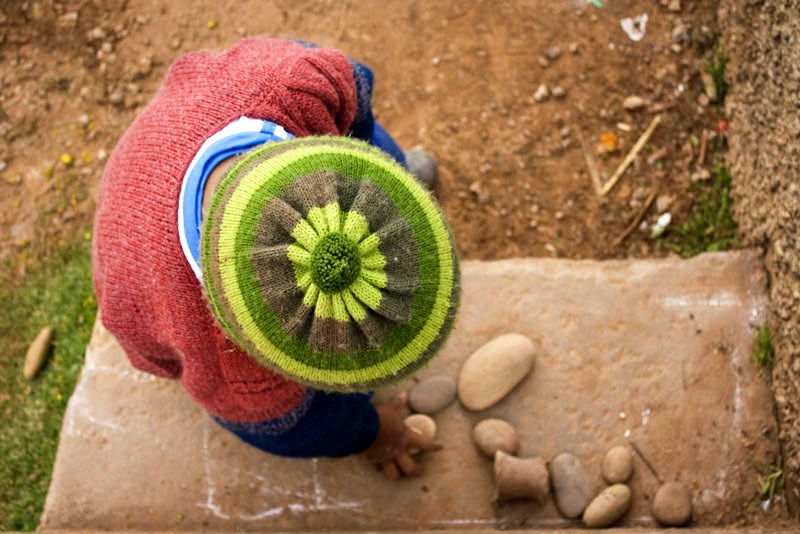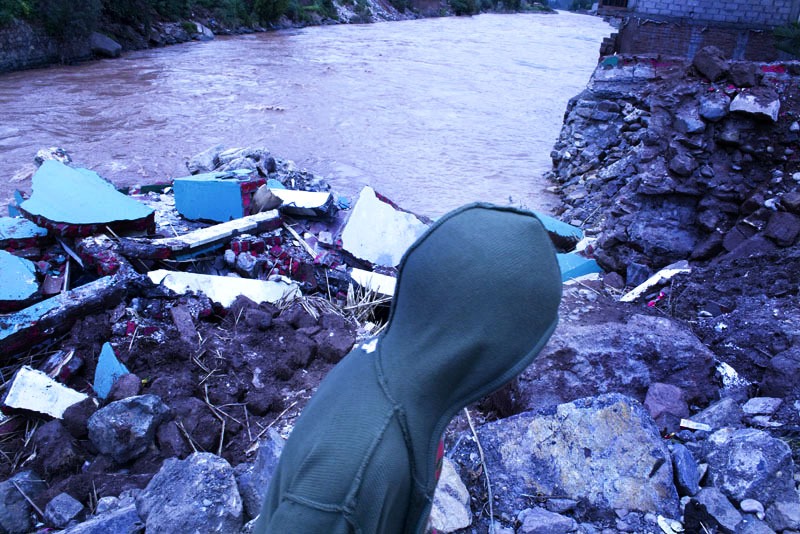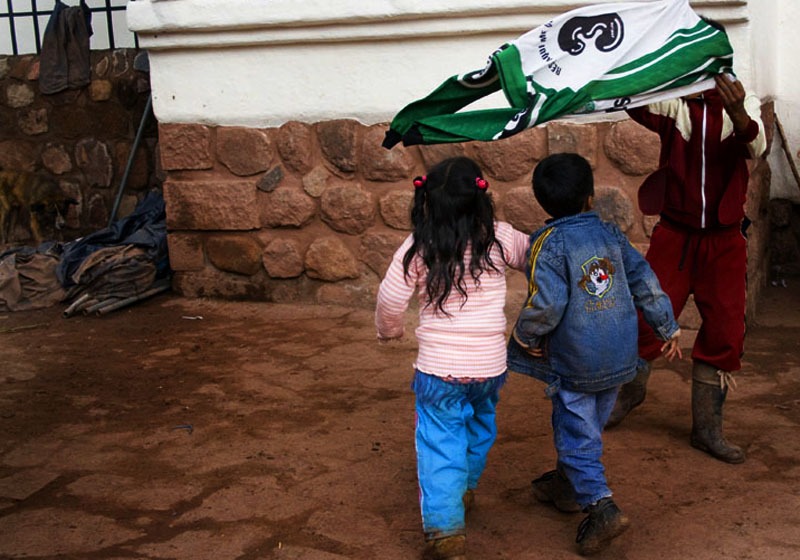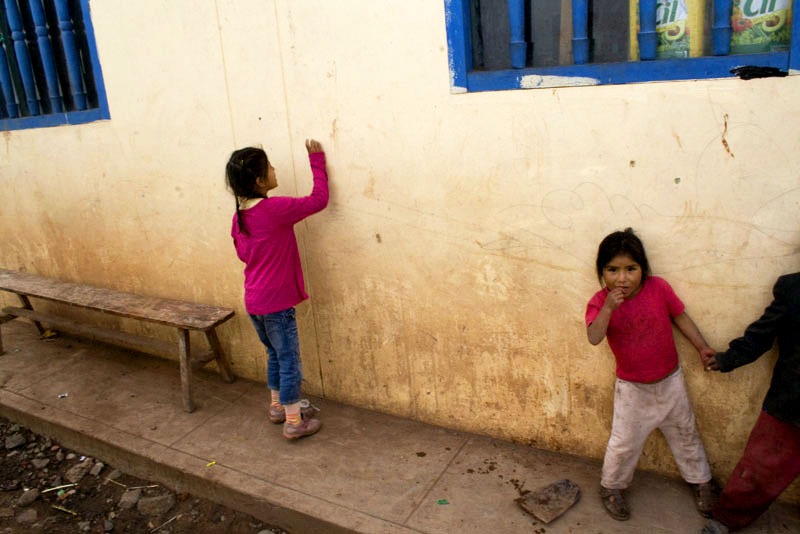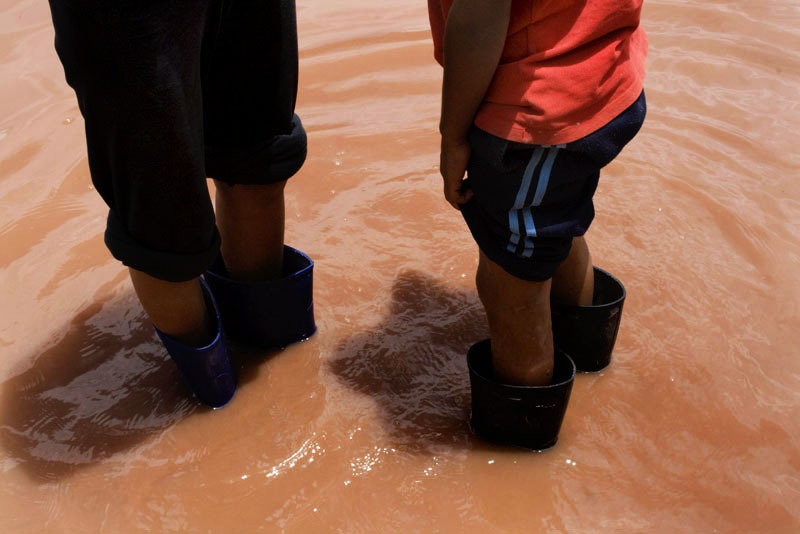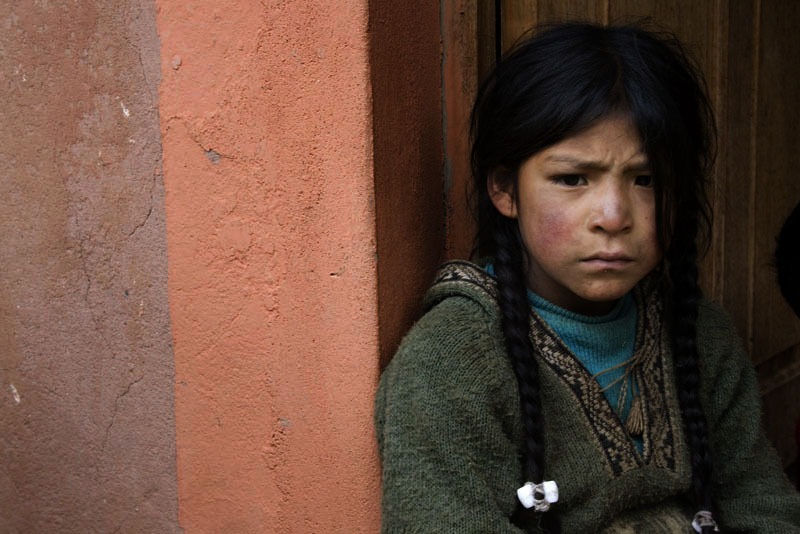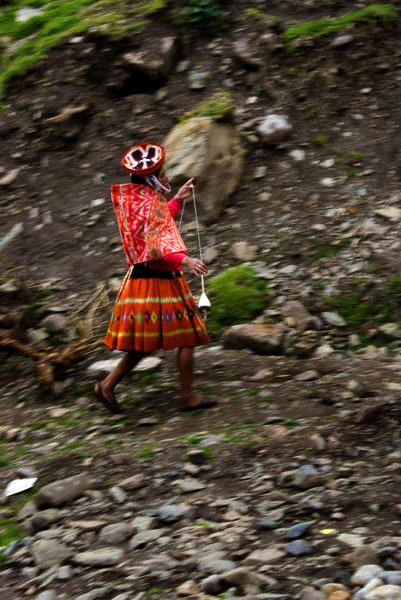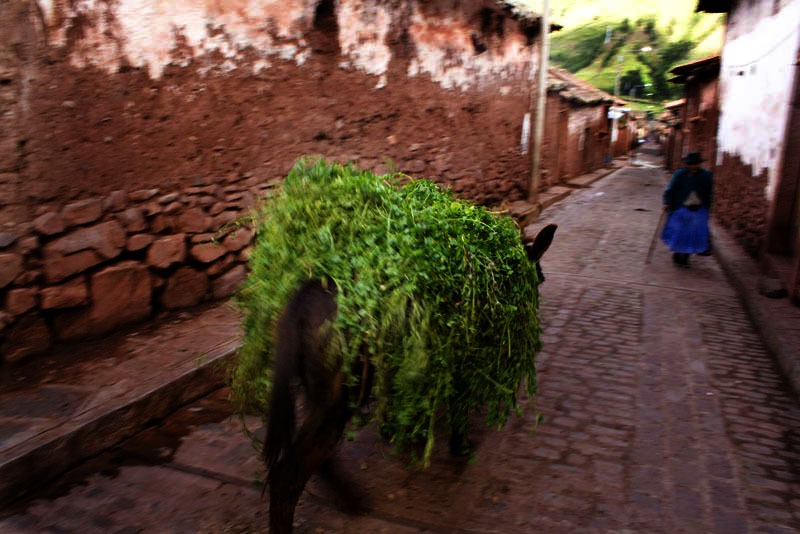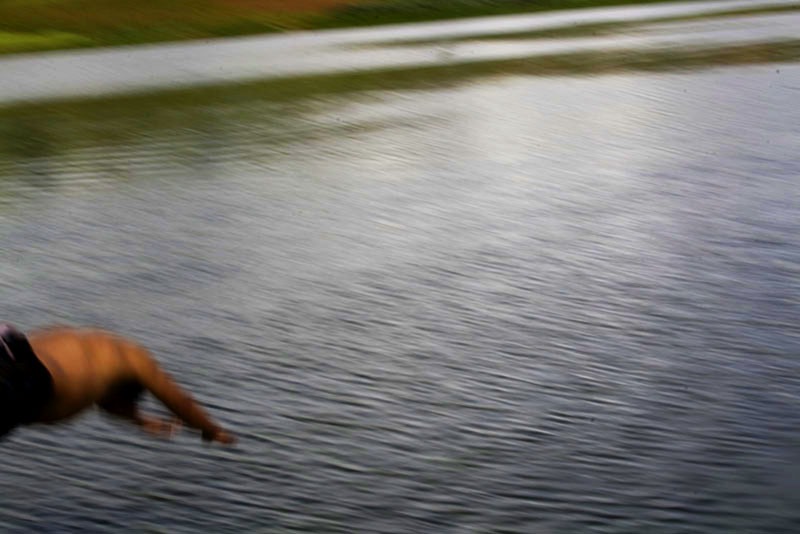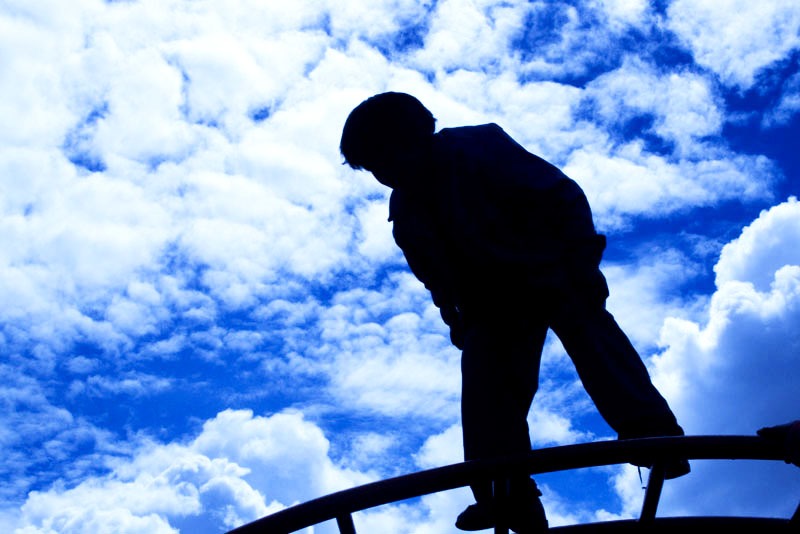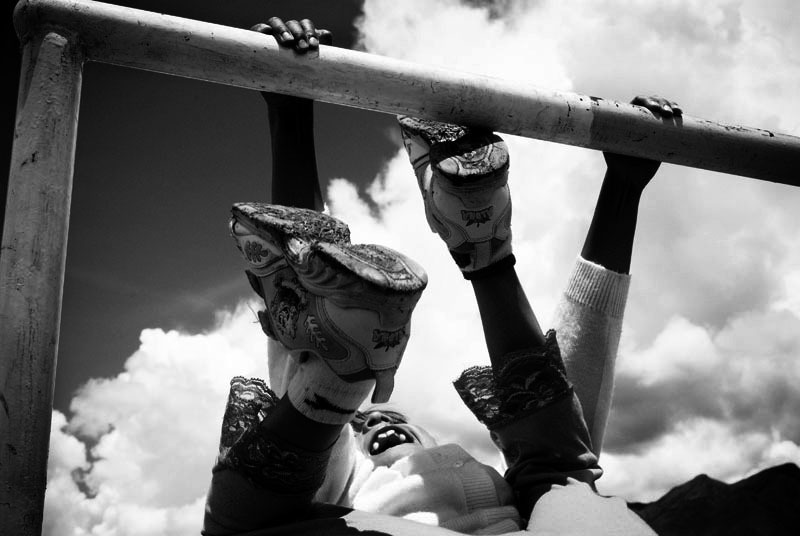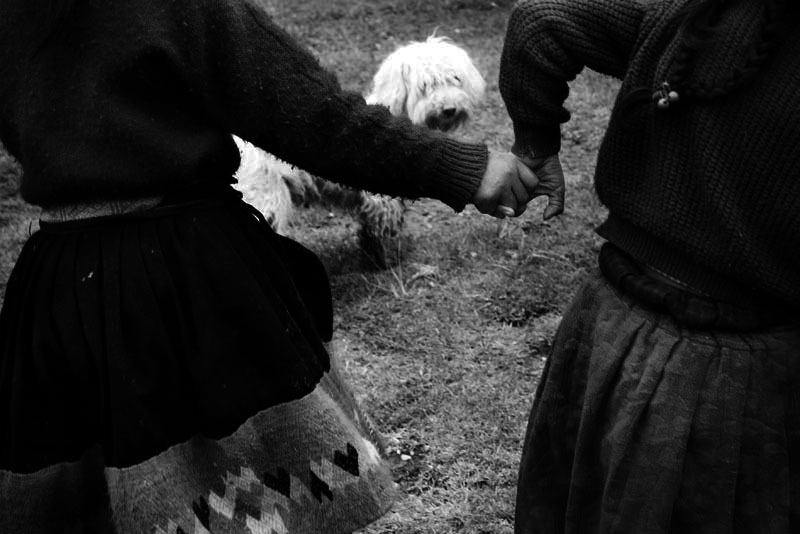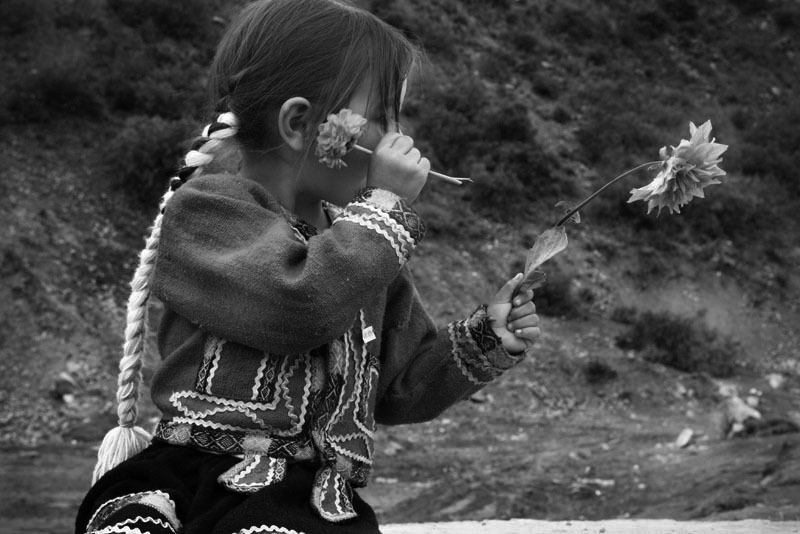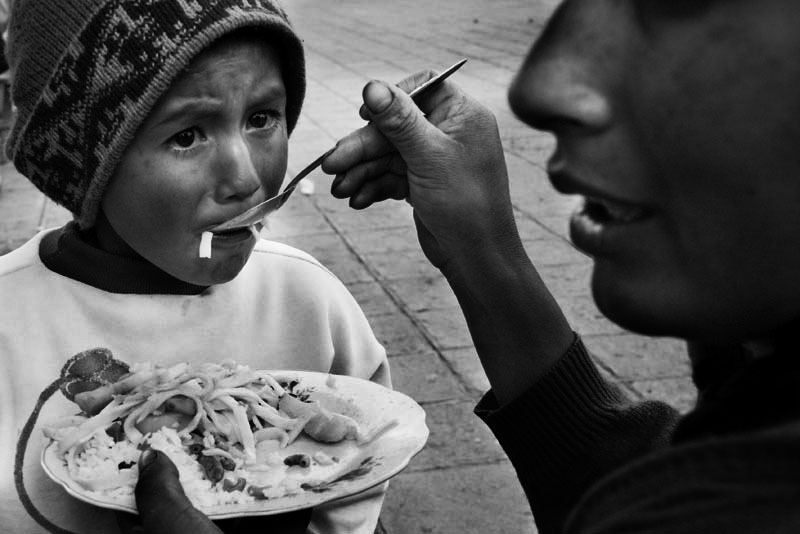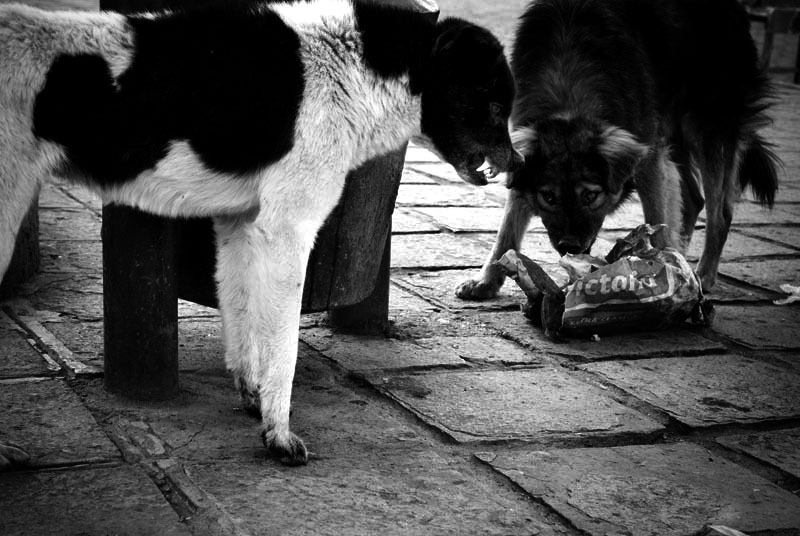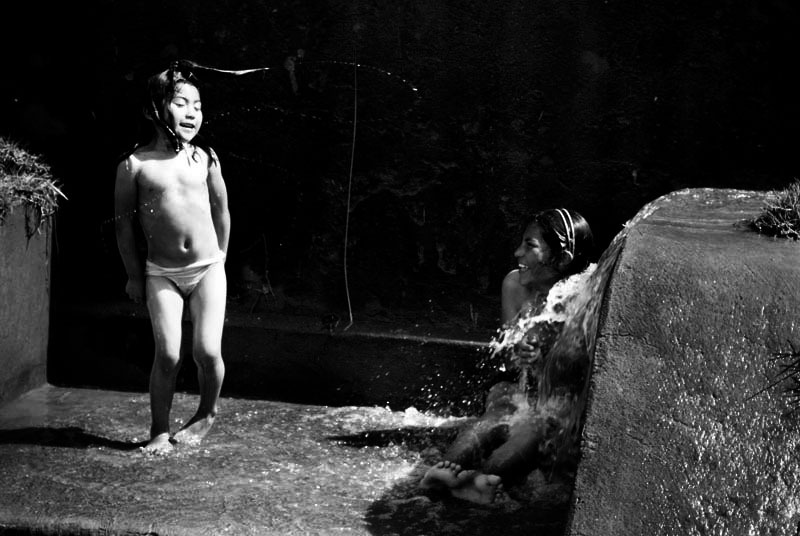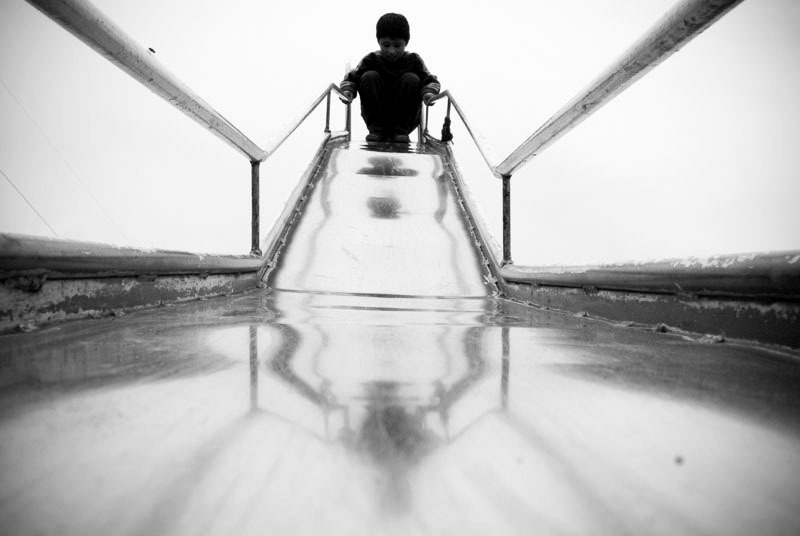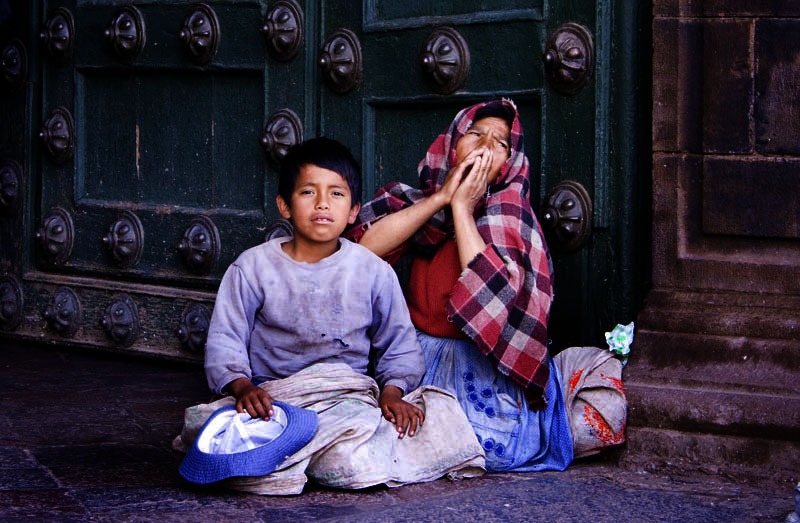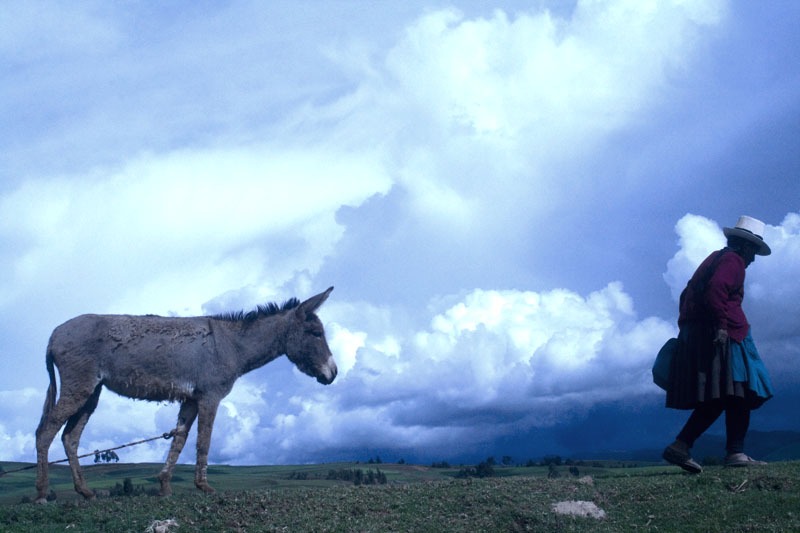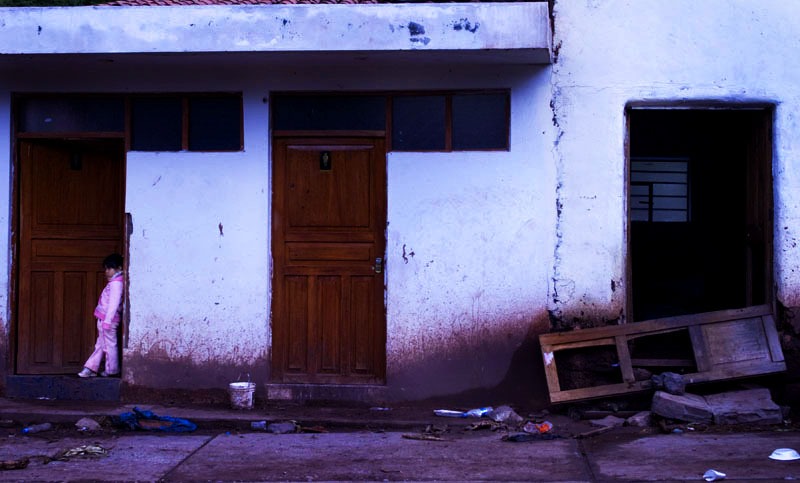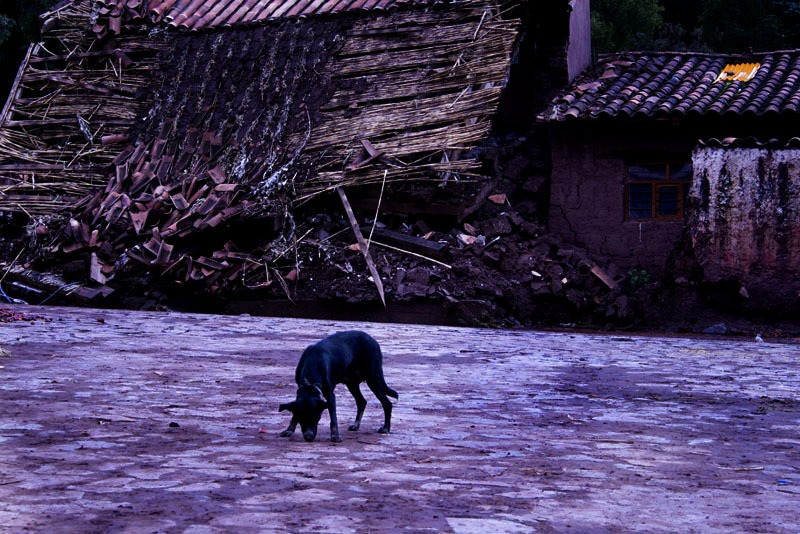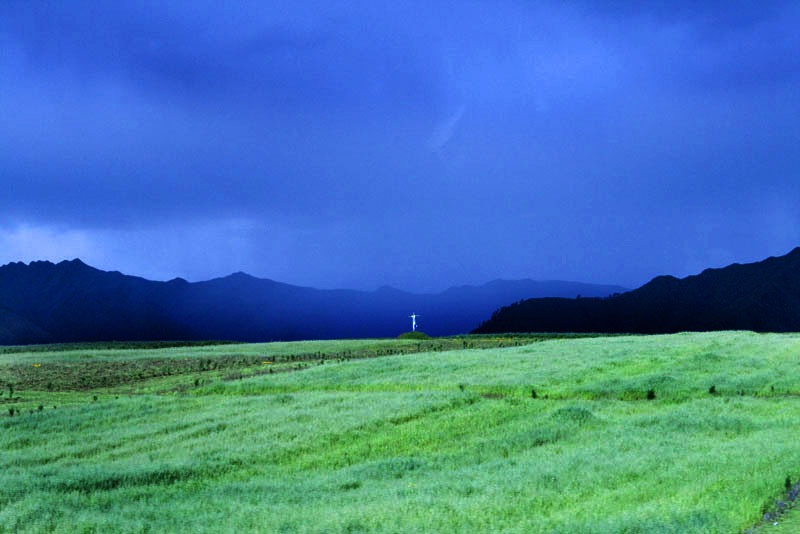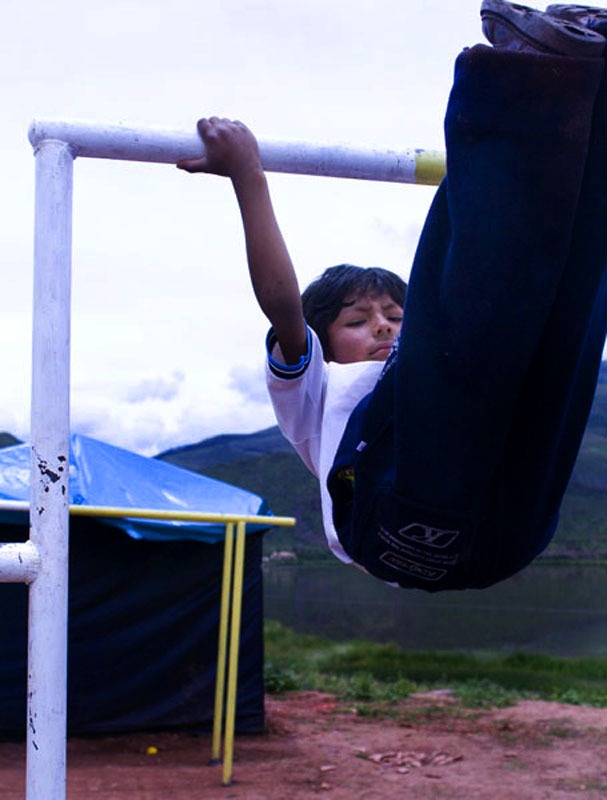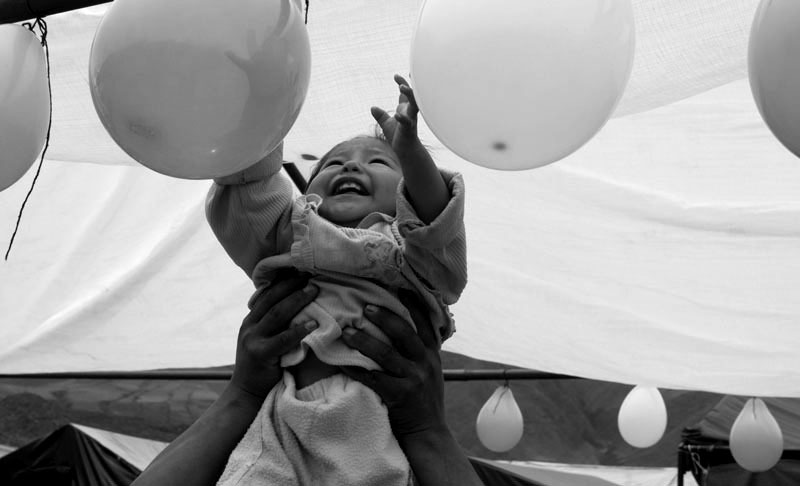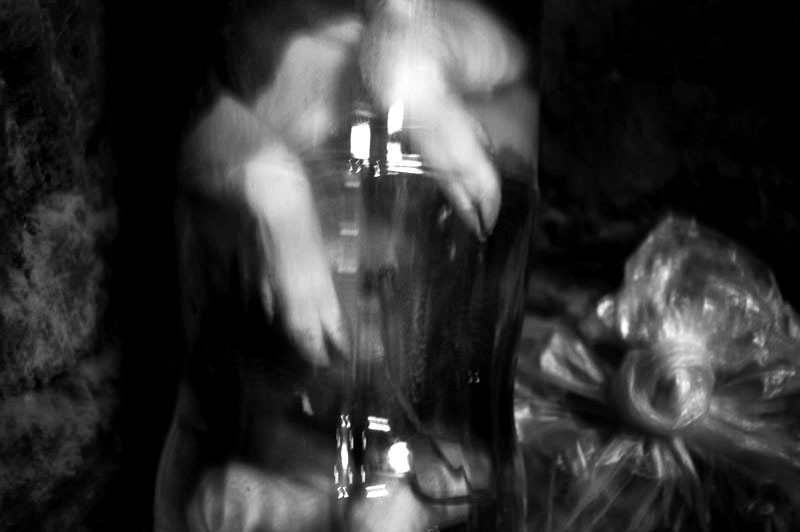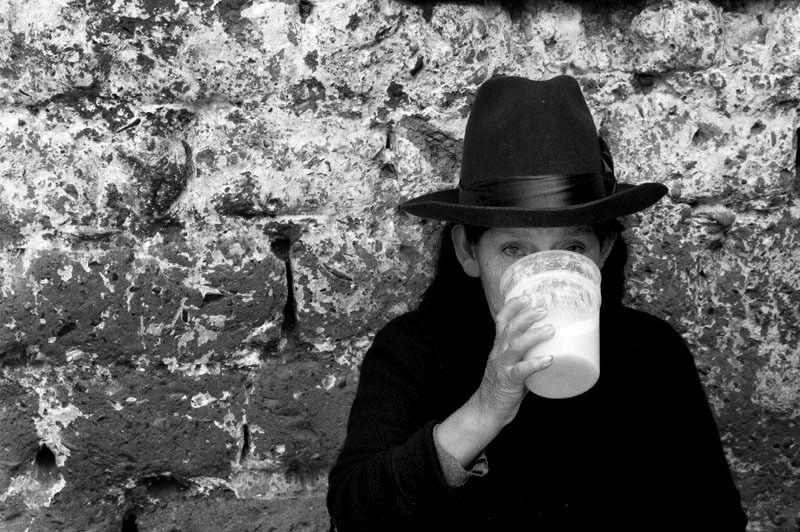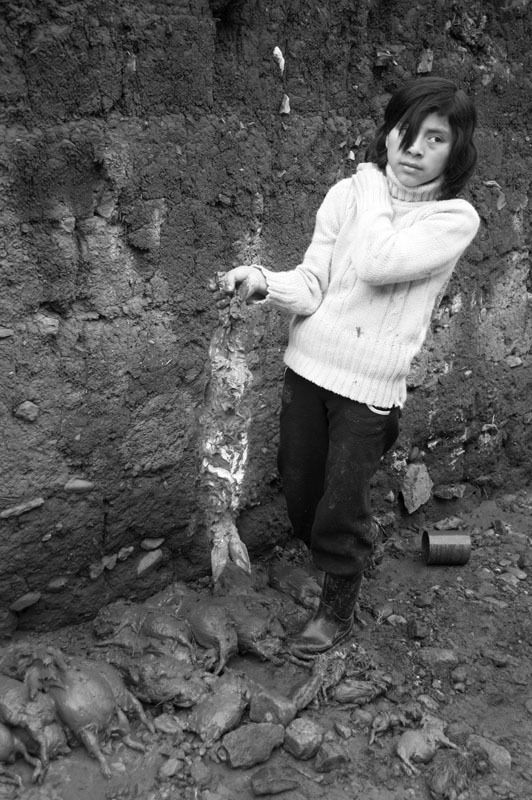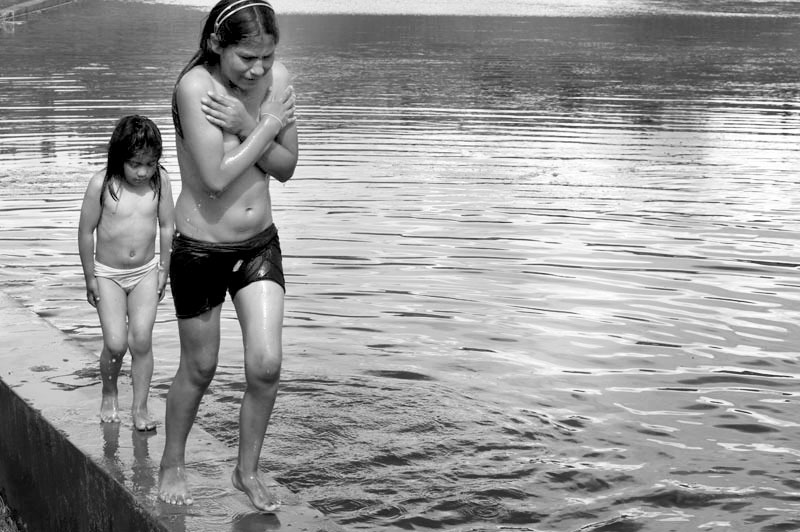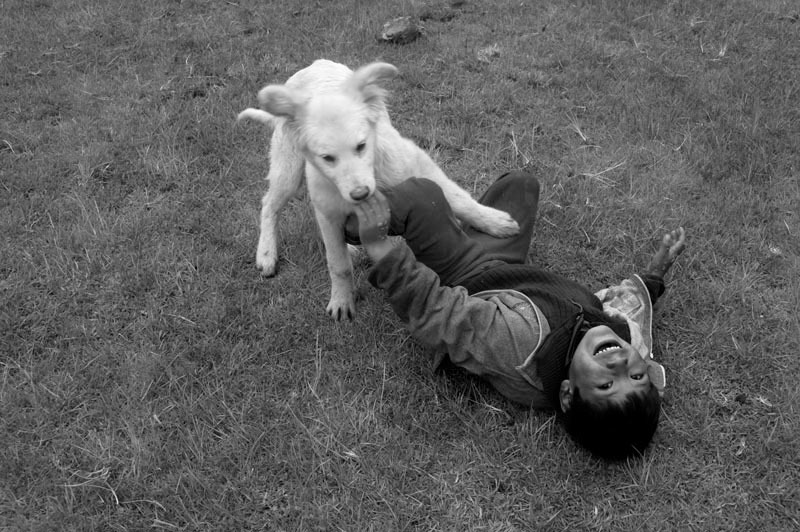Under the Rain Gallery
Sacred Valley and Cuzco, Peru 2010
® Angela Zhou
This was the first time I’ve ever been to South America. Before we arrived in Peru, I had so many expectations about this coutry and I would say, it didn’t fail me on most of them. I knew this trip wouldn’t be as easy as some of the others because it was going to be mainly a street photography workshop. I’ve always wanted to do street photography and I would say this genre of photography interests me a lot. To me, photography is not something that you can learn from listening to lectures or reading off a book. The only way to really do photography is to go out, take your camera and take pictures. I’ve always wanted to have some time to do nothing but just taking pictures. Luckyly for me, this trip provided this chance. What was even better is that Ernesto Bazan, one great street photographer, would actually go on this trip with us and critique our work so that we would know better about the true meaning of street photography. It didn’t start off that well at the beginning. I never really took photos digitally and I am not that familiar with the editing process. For my earlier work on this trip, framing and composition have always been the problem. Ernesto kept saying: “when you look into the camera, you have to imagine how everything within that frame is going to come out”. It sounds very vague but his comments actually helped me a lot. From that point, I stopped just taking “happy-snappy” pictures, and I would look for a “photographic moment” and looked through the camera, imagining the composition coming out as a whole. I didn’t just focus on my subject, but also on the surroundings and I would try to make sure that it all worked together. Ernesto also gave out some other great advise about photography in general. He mentioned that in most cases, it would be better if the subject is not looking into the camera directly, because then the subject reveals his or her feeling more naturally. Also, he told us not to cut the subject or the surroundings in any weird ways. I believe I will always remember those advise and apply them to future photography as well. This has been a great experience and I would love to do it all over again somewhere else next year!
Angela Zhou
® Carlotta Kohl
® Claire Holmes
This year I traveled to Peru for M-term and learned about street photography. Ernesto Bazan taught me about good composition and capturing a meaningful moment. I learned how to detect distracting elements in my photographs and how to take photographs of people when they are not looking directly into the camera. I also got to view natural disasters from the perspective of the people who were experiencing them. I came face to face with a town in a state of nearly total destruction. During the day we walked around towns freely in order to try to capture individual photographic moments. This taught me how to take a moment from ordinary Peruvian peoples’ lives and make it interesting. It also allowed me to learn about the cultural differences in Peru. If someone’s door was open they did not mind people going into their houses and observing them. The most difficult thing about street photography is making a photograph interesting. It is easy to just take pictures, but in order to make the photograph special there has to be an emotion or a story that the viewer of the photograph can seek out. Good pictures make a statement that is more arresting than an image that just says “here is this subject.” It is also important that there aren’t any thing too distracting in the background of the photo or the picture becomes too complicated. Sometimes elements in the background can help to make the photograph more interesting, but there is a delicate balance to be achieved. I learned that it is hard to take a meaningful photograph. I also discovered that some days of shooting are harder than others. On the second to last day of Ernesto’s workshop we visited a town that had been hit by a terrible mudslide two nights earlier. The town was almost completely destroyed and four people had died! There were dead animals lying in the streets and all the people were lined up waiting to be relocated to another town or somewhere that was safe. This opened my eyes to a level of suffering that I had never experienced in person. I had seen many disasters on the television, but that did not compare to first hand experience. It was extremely frightening to see people trying to find what little food they had left and trying to light a fire with their hair because they had nothing else to use. I also saw people from the Peruvian army trying to pick up what was left of some of the houses. This experience made me want to be able to help out more with situations similar to this back in the United States. When I first started this trip I thought of photography as just a hobby of mine but I realized that I would like to continue developing my skill and techniques as a photographer. I do not think that I want to be a street photographer, but would definitely like to try other genres of photography. This experience helped me view the world differently and it also showed me that I am extremely lucky to live the way I do.
Claire Holmes
® Daniel Shin
® Daria Schieferstein
® Elisabeth Walstam
My first thoughts when thinking back on our trip to Peru are all the beautiful landscapes we got to see when traveling in the van and when Ernesto found the magic moments and even when we stopped for pee breaks. My first impression of Ernesto Bazan was that he seemed nice and that I liked his critical critics. I think that it did really help me a lot with my photography and that looking over all at my pictures I grew and got better images throughout the trip. I wished that I hadn’t gotten sick during the first three days and that my camera wouldn’t have been set on a weird setting causing that my initial pictures turned out too blue. His critics and the points he gave us are going to help us even if street photography is not our personal favorite because the same rules apply to different genres of photography.
Elisabeth Walstam
® Eunice Kim
® Grace Curatola
My Peruvian adventure started with a large amount of enthusiasm and curiosity. As the journey began, I learned a lot about myself, as well as the people I was around. I cannot say if this was a time of growth, but it was a time of recognition for myself. I shot during the days with Ernesto. I tried my best to channel my inner documentary photographer, but struggled with discouragement upon viewing my work. With a wide variety of moments to choose from, I often found myself overwhelmed and unproductive. With some individual attention from Ernesto, I learned how he worked and I appreciated his methods and ideas on photography. He is truly an inspiration to me. I find that through listening to his techniques and practices I begin to question myself more and more for what I am shooting. I become more aware of my full frame and what to include or not include. I look forward to continuing to develop my photographic techniques and moving forward with plenty of space to breath and grow.
Grace Curatola
® Haleigh Rimland
I have been going to the Ross School since 5th grade, I have heard about M-Term and I’ve gone to some of the presentations, but what I experienced in Peru was better than any presentation. I had a great time experiencing the culture and the Peruvian way of life. I got to work with one of the best street photographers Ernesto Bazan, and I learned skill, technique and finding the “photographic” moment even in the most chaotic or saddest times. I even got to know some of my friends for the better and worse. Living with the people you see 24-7 can be hard, but we were all able to pull through and have a great time. I also learned so much about myself as a photographer with Ernesto’s help of course. I was afraid that Ernesto was not going to like any of my photos when we first started, because I heard so many stories of how critical he was to the kids on one of the other trips he did with Ross. As it turns out he was super nice, but of course he had to critique our photos so he had to be a little critical. On a regular day we would drive around Cusco stopping regularly on the side of the road whenever Ernesto saw a “magical moment” or stopping at villages or markets. We practiced on our picture taking skills every day; no matter where we were we were taking photos. At night we would have some critiques depending how late we got home, and sometimes we would have individual critiques in the morning. From the time Ernesto was with us, I learned so much on street photography. Although it was tough to “find the moment” at times, Ernesto picked eight photographs from my selection over the week and a half. My favorite part of the trip was stopping on the side of the road to see this field covered in yellow and purple flowers, and in the background you could see the patches of different colors of green from the farm land, and in the way back snow covered Andes. It was the most “magical moment” I have ever seen! My other favorite part was when we went to the Alpaca farm and we got to feed and pet all of the Llamas, and Alpacas! My least favorite part of the trip was getting sick, which is always a bummer. This trip helped me become a better photographer, and help me give to the people in need. All of the teachers did a wonderful job, and especially Ms. Martino who was in my room caring for one of us who was sick every night!
Haleigh Rimland
® Hayley Smith
® Kate Fitzsimons
® Kendall Shedden
When I saw that sign that read “Bienvenidos a Cusco” as our airplane was descending into the city, I knew this trip was going to be great. I was thinking about all the new things that I was about to experience. For the first few days we took pictures in and around the Cusco. We went to orphanages, schools, villages, and witnessed devastating floods. During this trip I learned many different ways to take pictures. Initially I was taking typical tourist photographs, but as time went on I grew as a photographer. My goal was to capture people in their everyday lives. In the end, I did not care as much about how many of my photos were selected but just how much I grew, and I am also content with the photos I took. My favorite sets of photos were the photos of the town after it was severely destroyed by the flood. I was not brave enough to take pictures of the funeral because I did not know how the people around me would react. I was shocked about how devastating this flood was, and I knew that this was something I would always remember. I enjoyed going to places that a normal tourist would not go to in Peru. We went on muddy roads that were next to cliffs, played with the kids at the schools, treaded through water with my rain boots, and learned from Ernesto by just watching him take pictures. I remember when we were in the village that was flooded and he did not mind that he was in two feet of water he was still taking pictures and talking to a person who had just lost his home, which really shows how much he enjoys what he does. I had a challenge with “capturing the moment” as Ernesto described it. I always hesitated before taking a picture making sure that I had the correct framing and light and then I lost the moment. I enjoyed Ernesto’s opinions on our photos. I also learned from him when he was critiquing all the other kids’ photos too. I definetly would like to go back to Peru again and help out with the orphanage and go to Machu Picchu in the future. I definitely will never forget this trip because I not only learned a new perspective on photography, but on life from seeing people suffer from the floods.
Kendall Shedden
® Noelle Wyman
® Savanah Hoge
The 2010 M-Term trip to Cuzco Peru was definitely a learning experience. I was able to understand how I edit my photographs, finding the right moment, and understanding correct angles to make the photograph visually pleasing. By the end of my trip I was able to tell quickly whether or not the photograph was worth taking or not. In the beginning of the trip, I was taking hundreds of pictures a day while towards the end of the trip I would not take more that 150 photos a day. Other than gaining a photographic understanding on the trip, I also had a global understanding of the country. Due to the rainy season most of the houses made out of mud in many towns had been destroyed. The rain also caused landslides during our trip, so most of the roads became dangerous to drive on. It was definitely interesting to see a new country especially one like Peru, showing the way people live there. Seeing how easily the rain can destroy a village is definitely shocking. One day we went and visited a village that had been recently destroyed by that and it was hard to be able to take photographs. For a while I walked around the destruction viewing the coating of mud and vehicles buried in it. I saw clothing and furniture randomly placed around and thought about what would happen if I had lost everything. At one end of the village people were washing their hands in a puddle of water while the other side a funeral was taking place. The feeling of death and destruction definitely brought myself to a reality that I never felt before, and made me realize how lucky I am. I was also very lucky to be able to attend this trip. I saw so much beauty in one place and learned about a new culture. I was also able to work with and learn from an important photographer. I had so much fun on the trip as well, due to being with a good group of people who had a good time as welI. I thank my family so much for giving me the opportunity for attending the Peru M-Term as well as the Ross School.
Savanah Hoge
® Sylvia Laytin
South America, Peru to be exact. What an amazing country, so different from the day-to-day life in America. Going there for M-term was a life changing experience for me. Working hands on with world known photographer Ernesto Bazan was great since I learned so much. I even got to witness a natural disaster first hand. Photography was the main goal of this trip, and we beniftted greatly by working with Ernesto. He got us into street photography, which I personally had never tried. He taught us to hold a connection with our subjects and to make sure everything was perfect before taking the photo. I noticed from Ernesto that he would communicate with the subjects he wished to photograph for a good 20 minutes before he tried to take the shot. This was probably the hardest part for me because I didn’t speak a word of Spanish. One of the biggest keys were to not have the subject you’re photographing to be too aware of you. I would have to wait until the environment got used to me before I took the shot so no one would be looking. Another part of the learning was that the background had to relate and aid your subject. Every day I seemed to absorb what Ernesto had taught us during critique, and by the end of the trip I really saw a progress. I greatly enjoyed being some place new. I’ve never really been out of the country, so Peru was a huge treat for me. The sites, sounds and even smells were different then the US. It was amazing to be able to adapt to the basic life as a Peruvian. Natural disasters were a huge part of our trip. From working in the school to seeing it first hand, flooding had destroyed homes and families. Even when these peoples homes were destroyed or their family members were lost, they could still find joy by playing a simple game or coming together as a whole. We helped the citizens of a wrecked village by providing and distributing food to eat for the children and the elderly. The hardest part about being in Peru was going to a village, which had been flooded the night before we got there. The atmosphere was full of dread and we were soon to find out that death was in the air. Homes were buried, animals lay captured in mud, and a funeral took place before our eyes. I walked around and was traumatized at what I saw, and realized how lucky I was to be able to sleep soundly without having to worry if my house would survive the night. From improving on my photography and experience a life-changing event was more then I had expected going into the trip. And I am so thankful that I was able to go. I will remember the Peru M-term in 2010 for the rest of my life.
Sylvia Laytin

